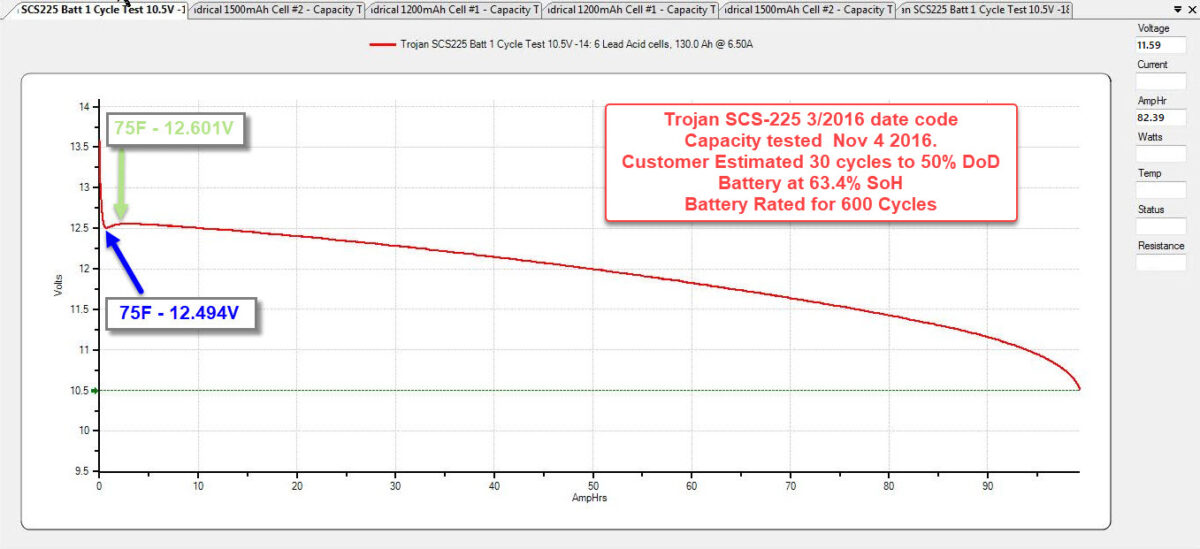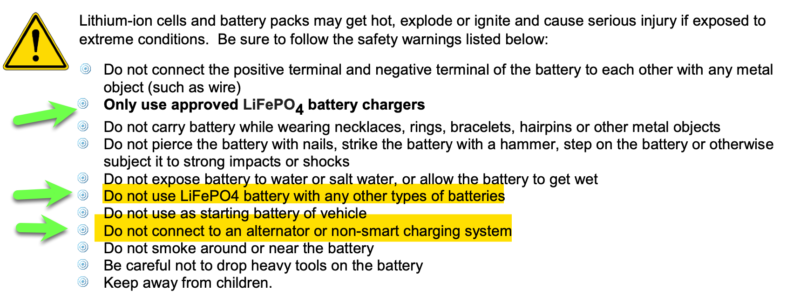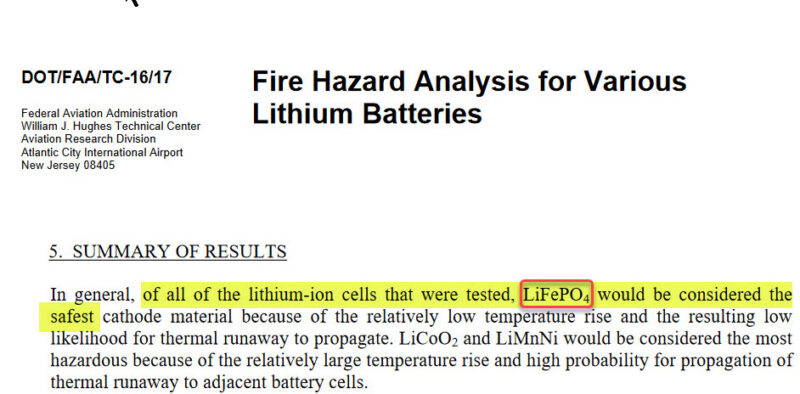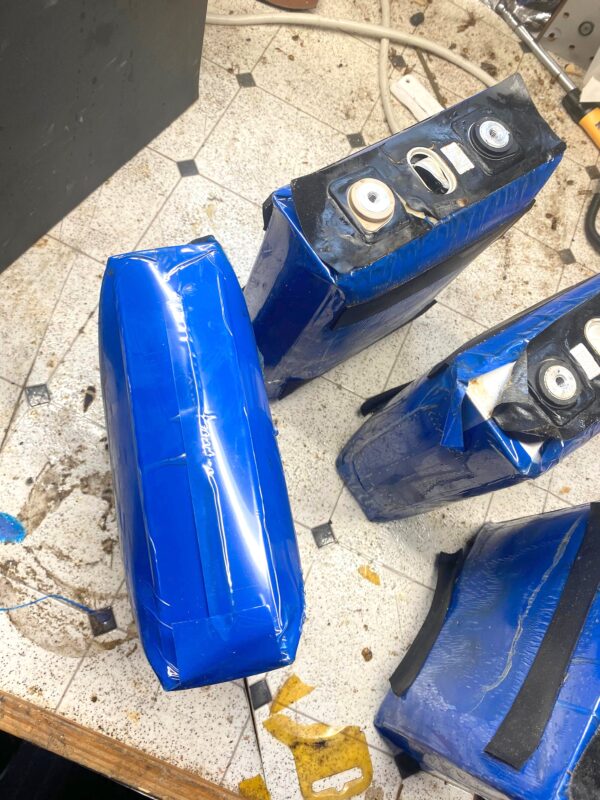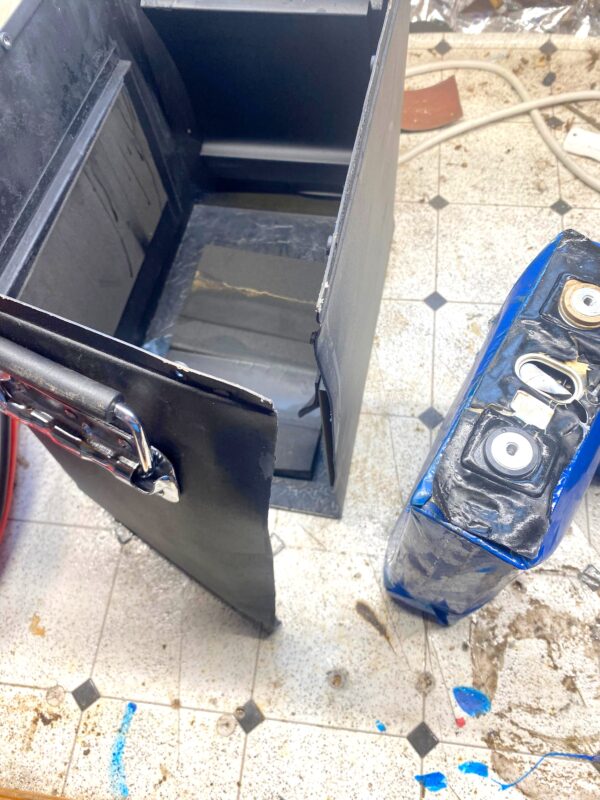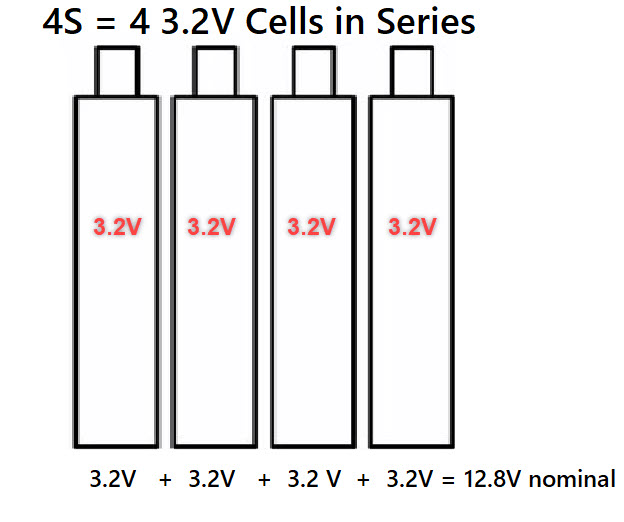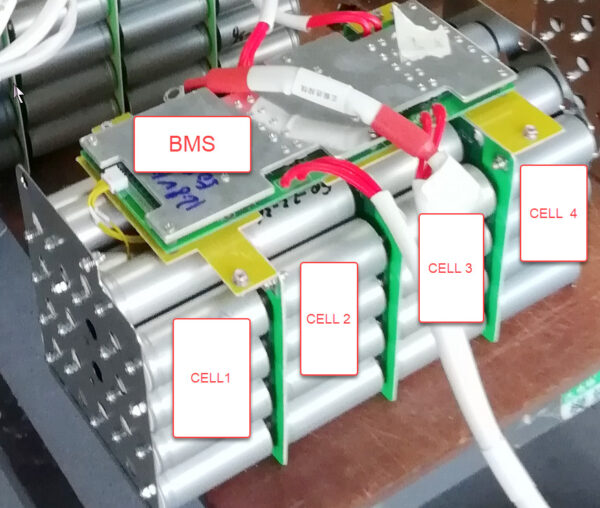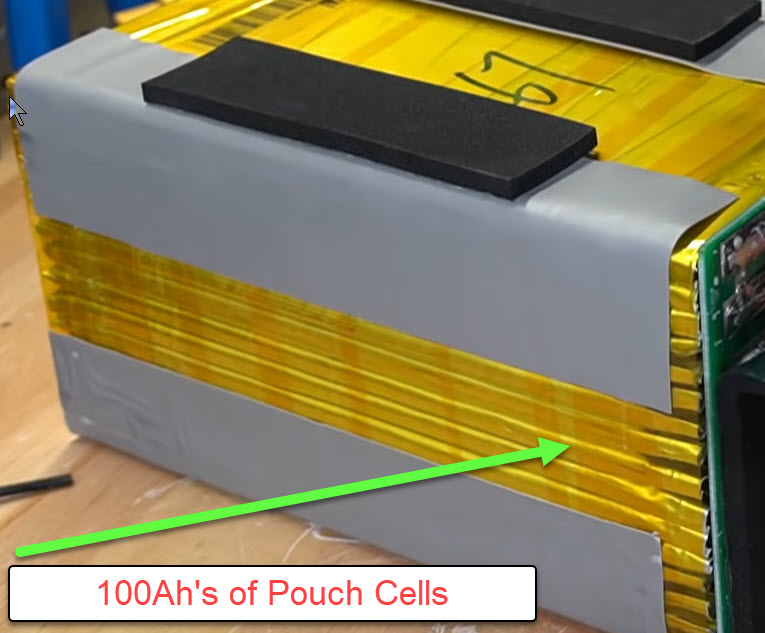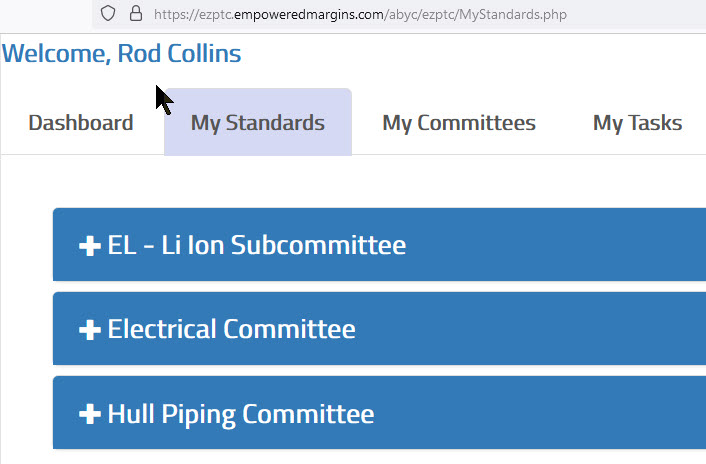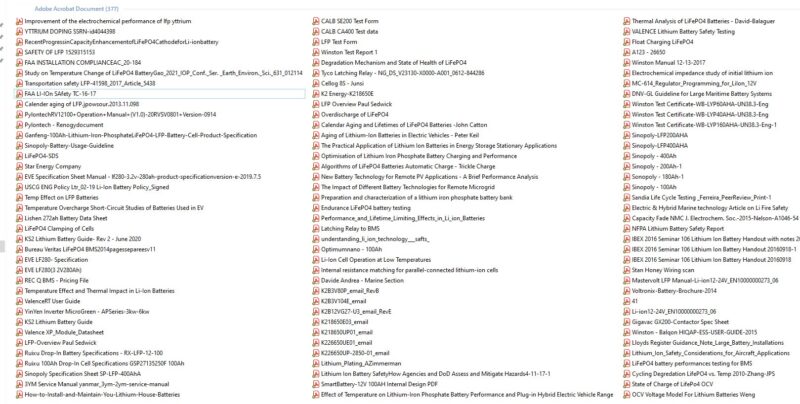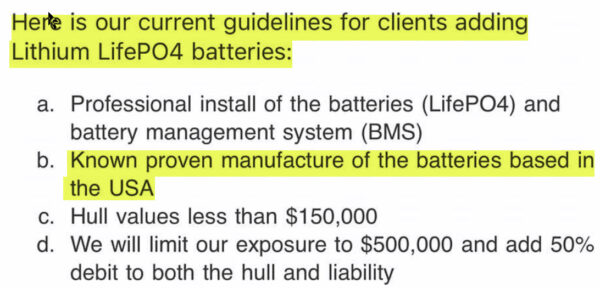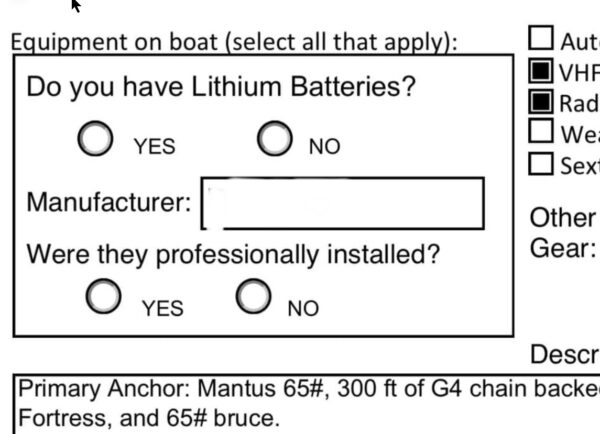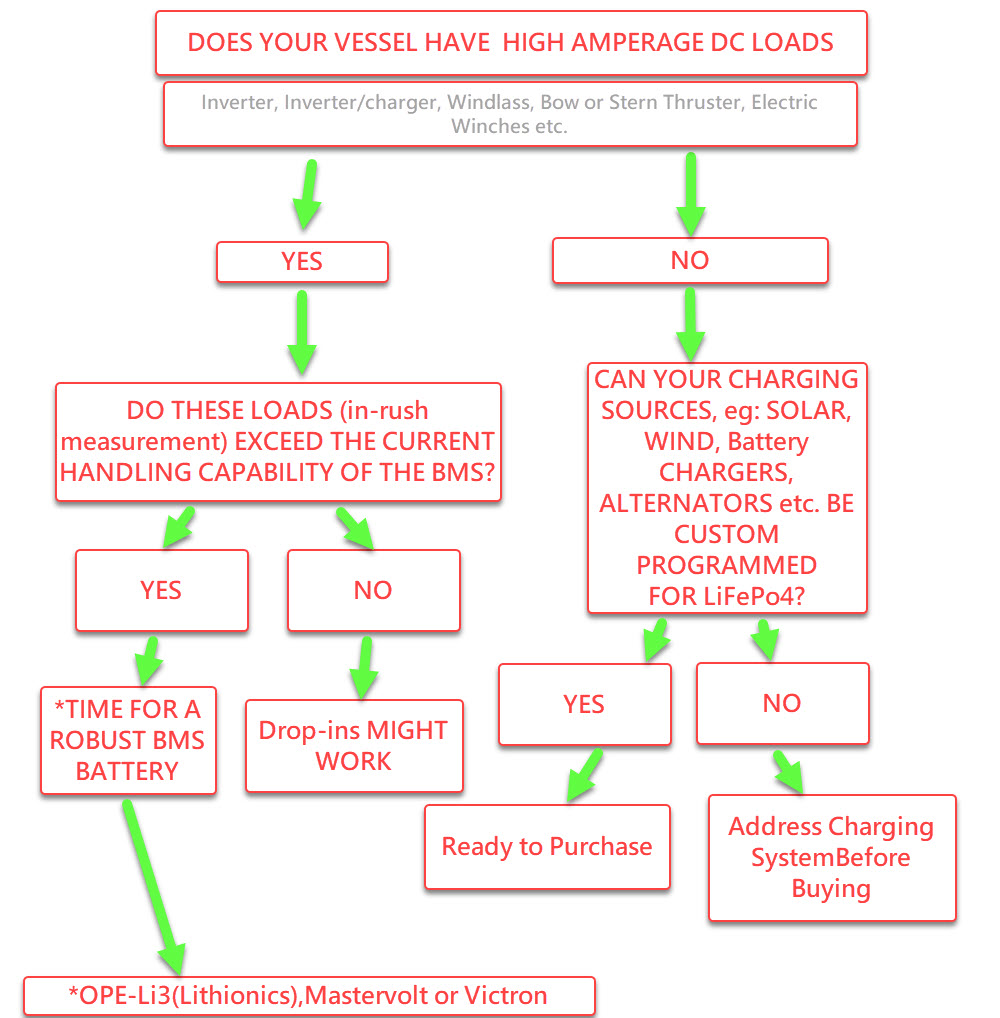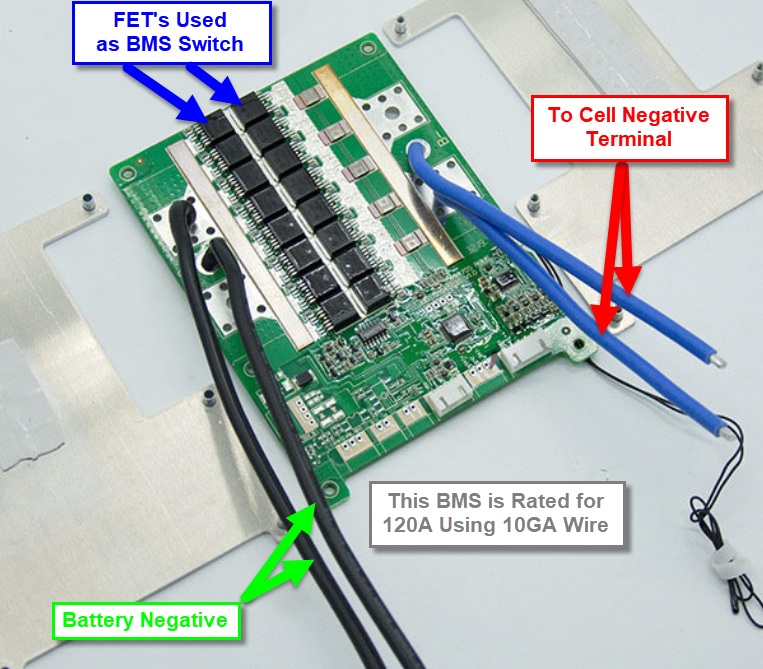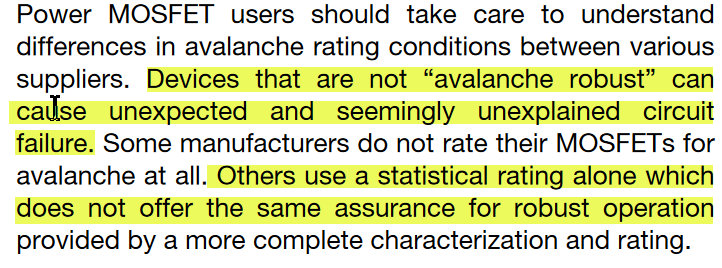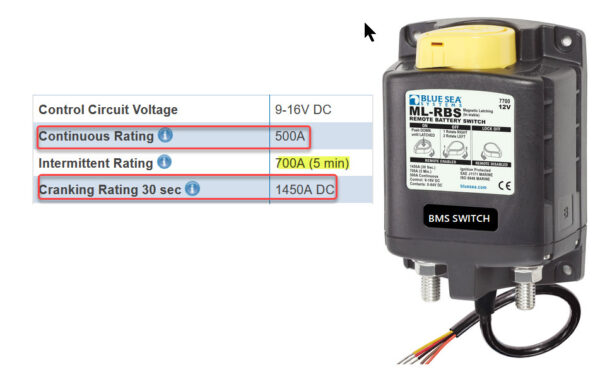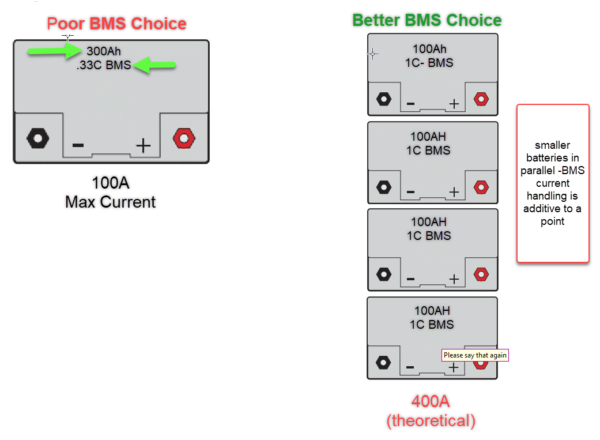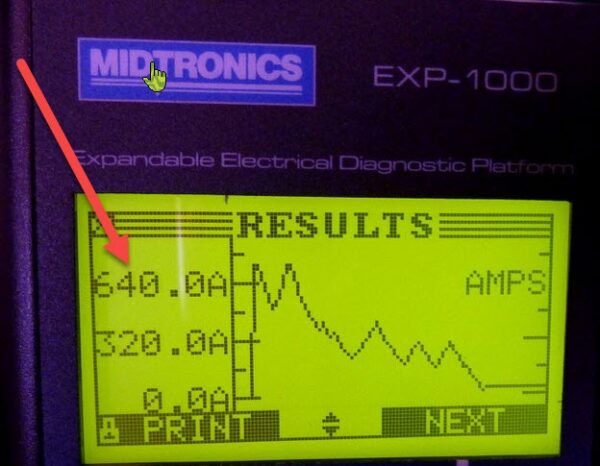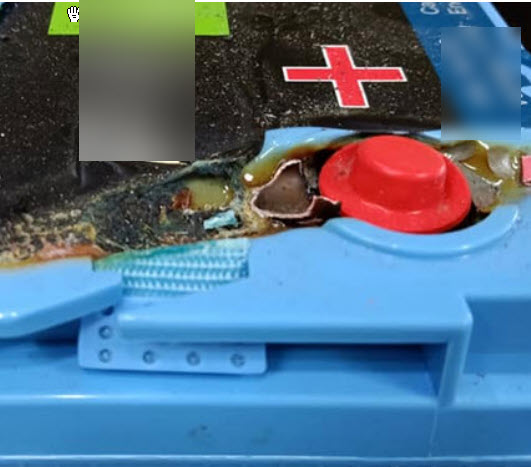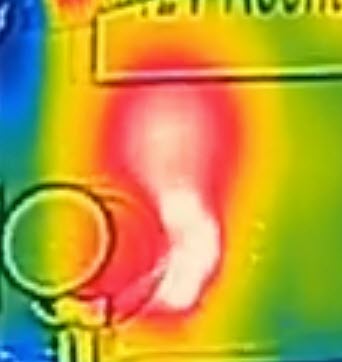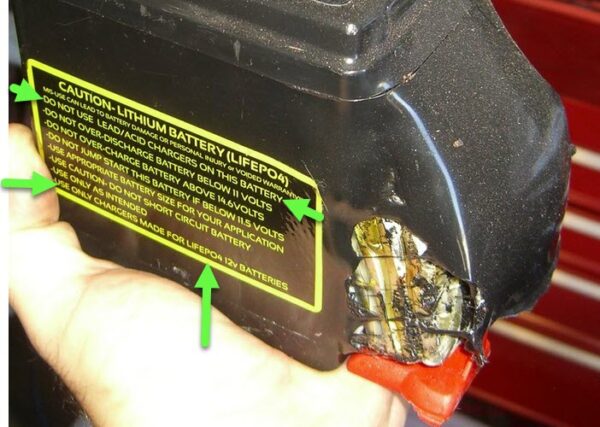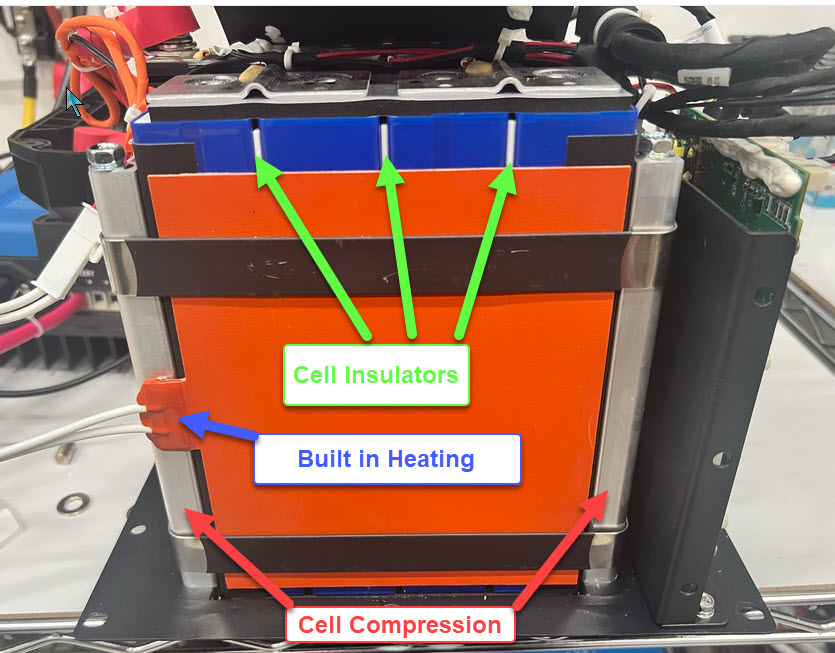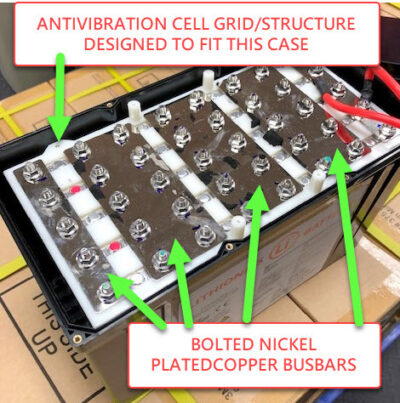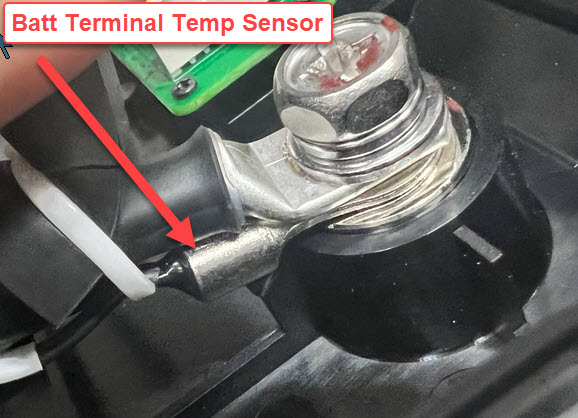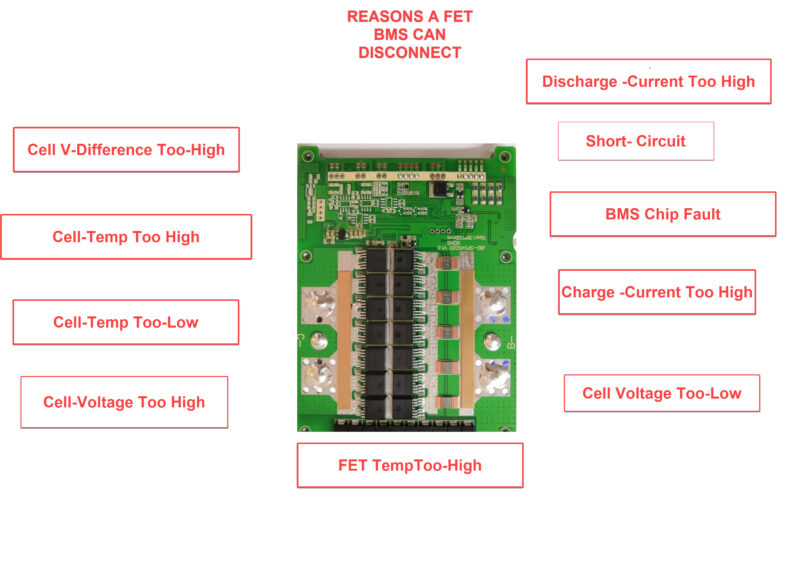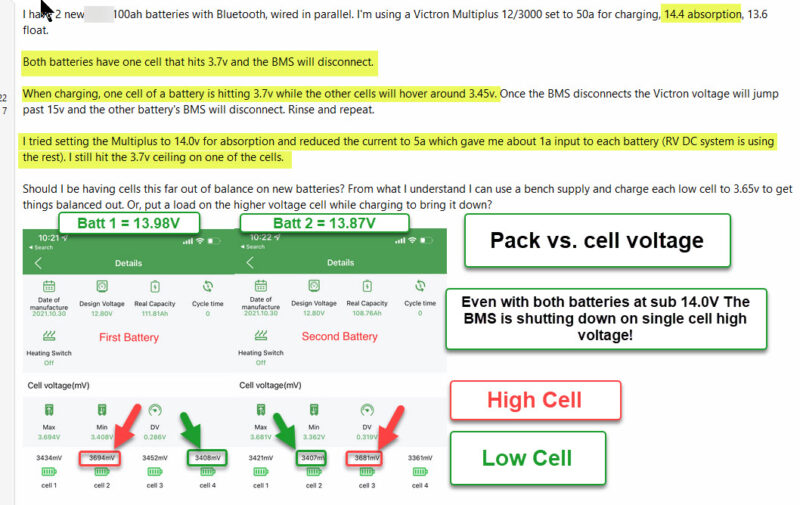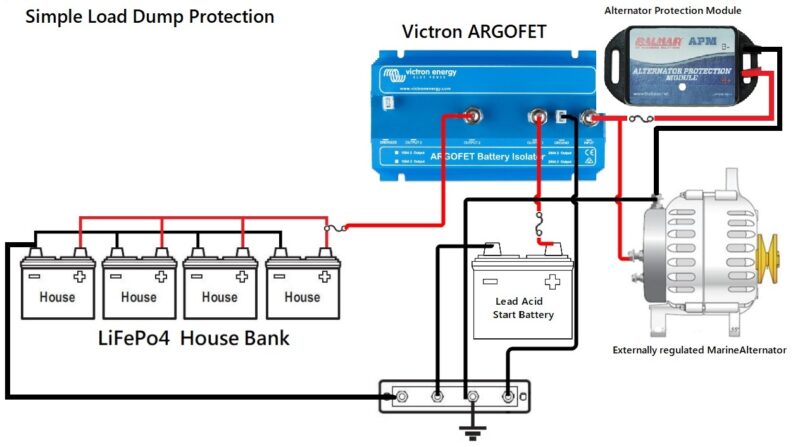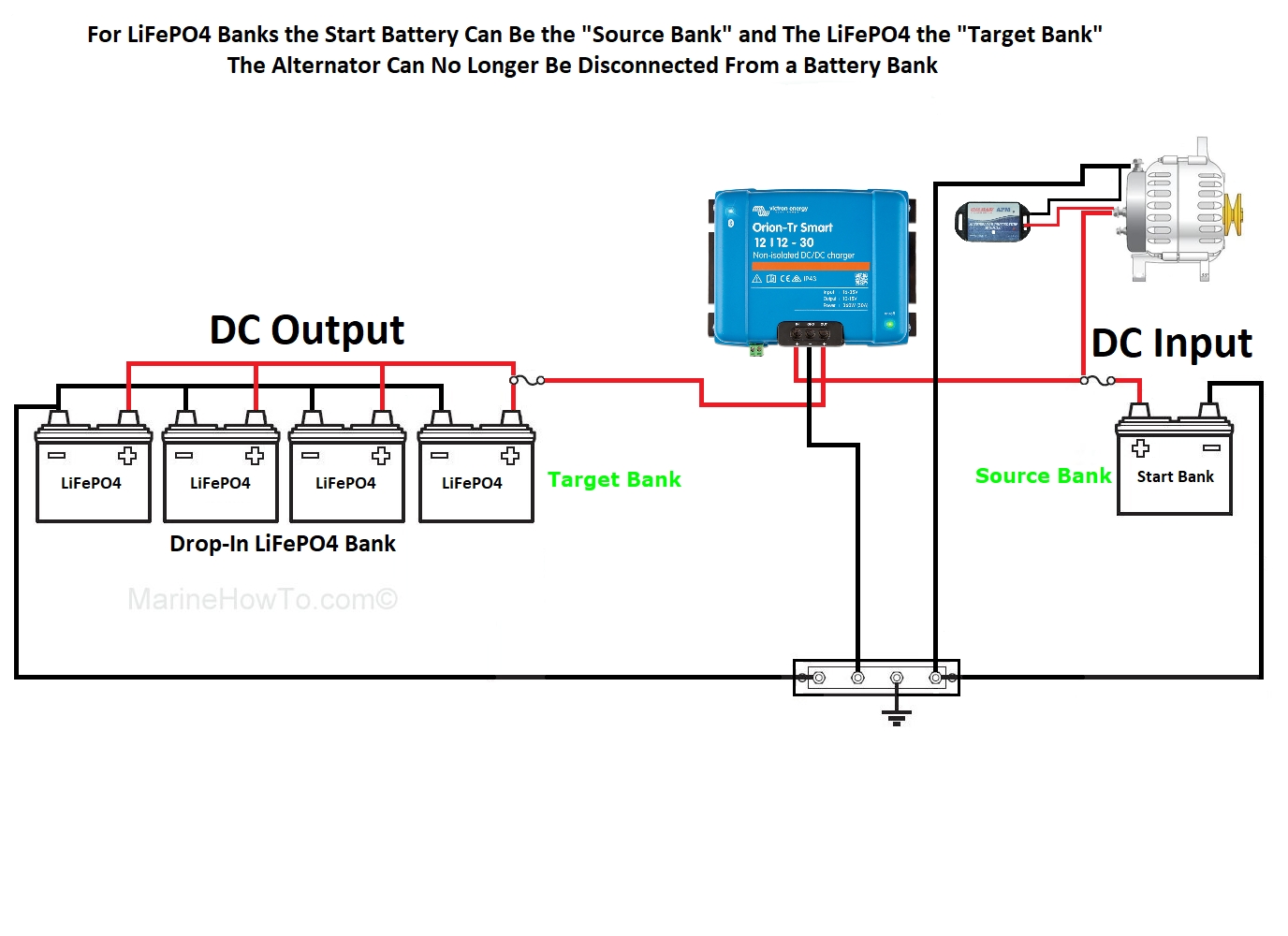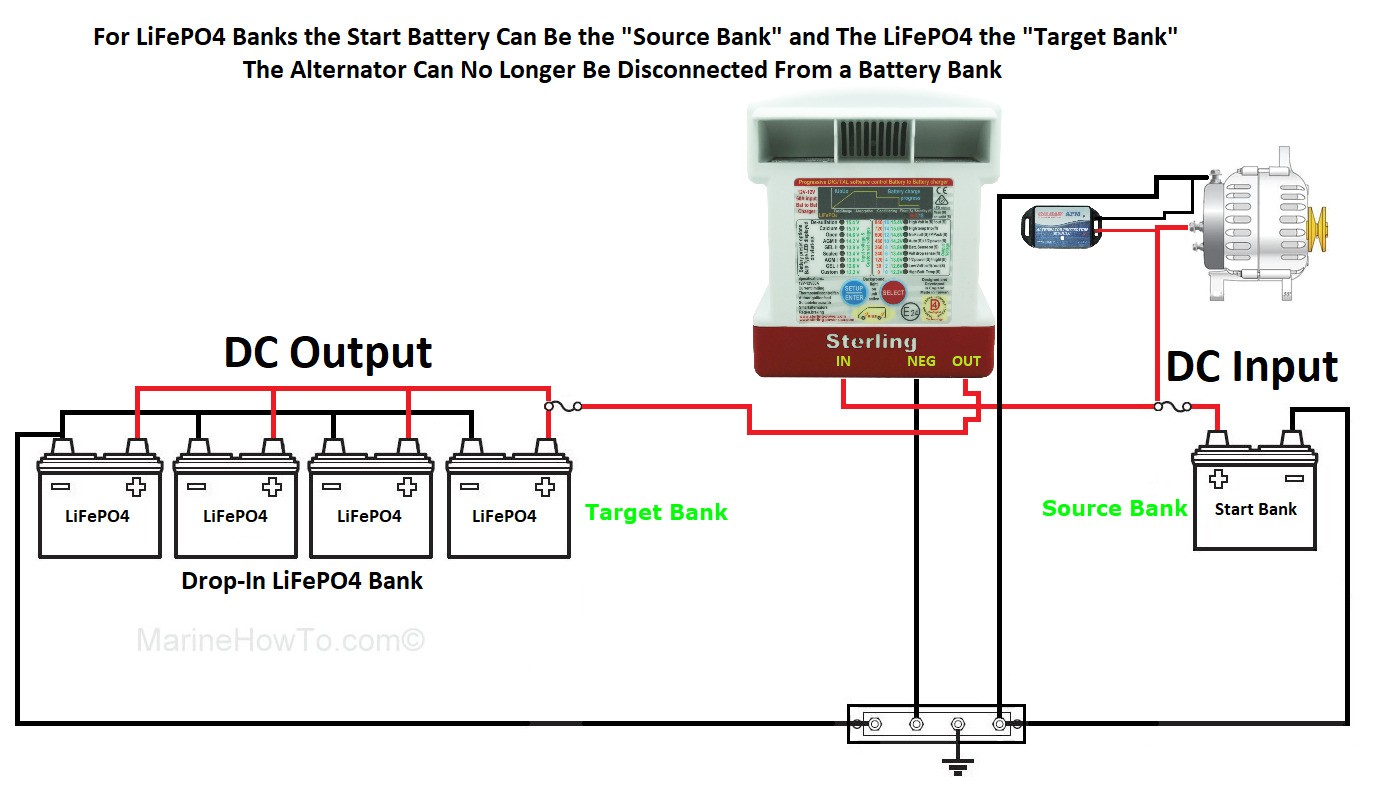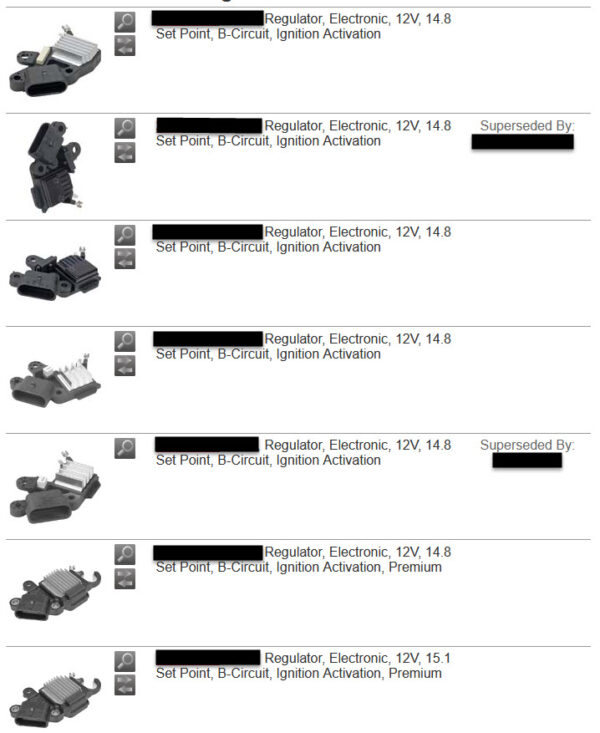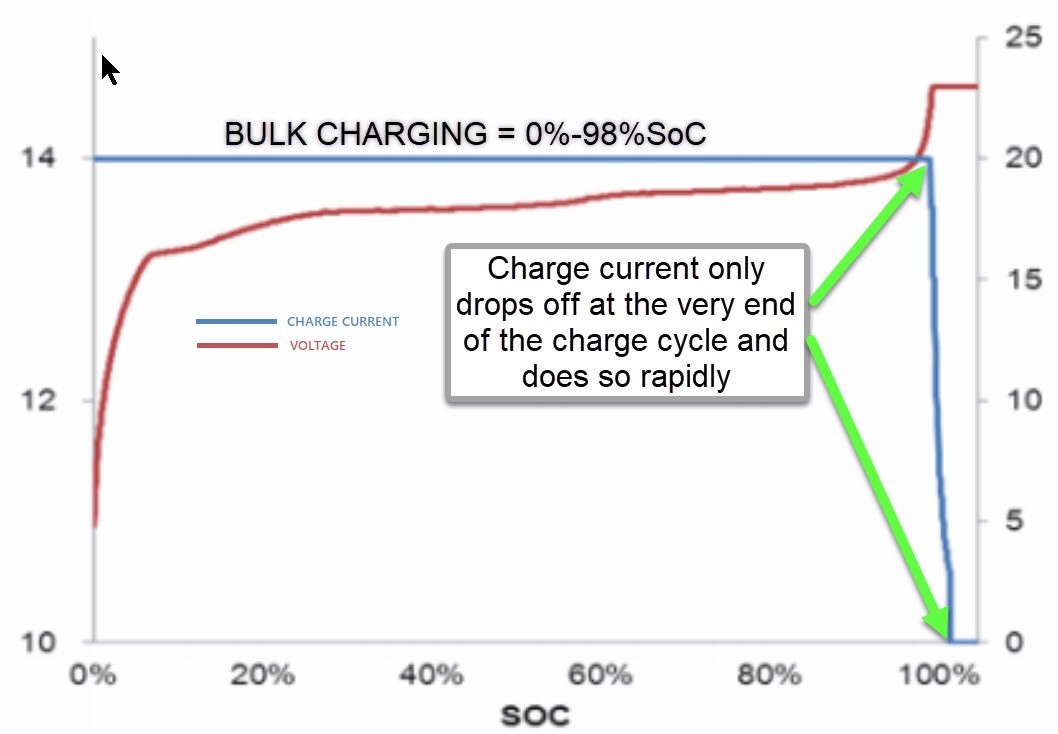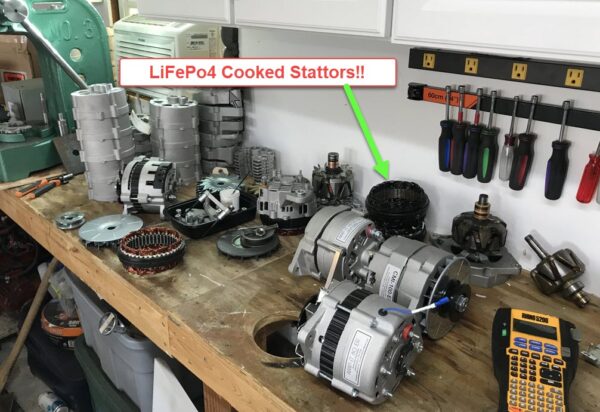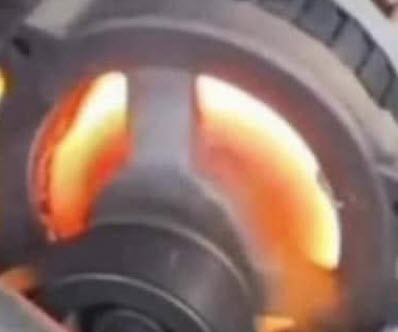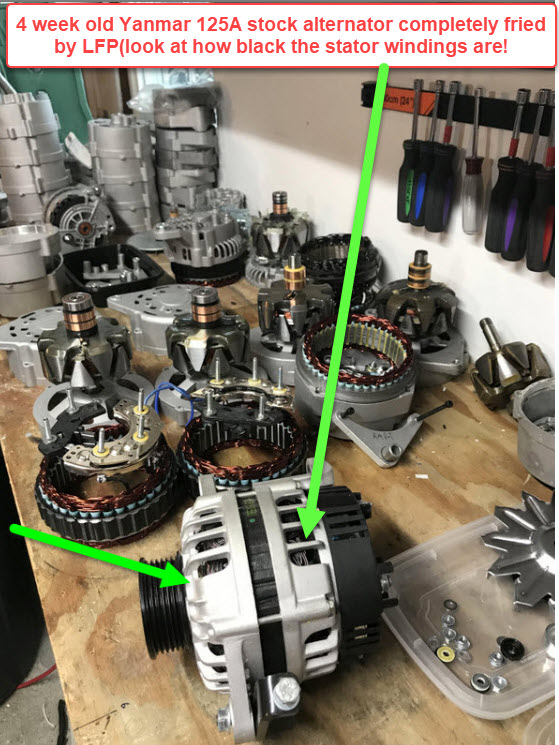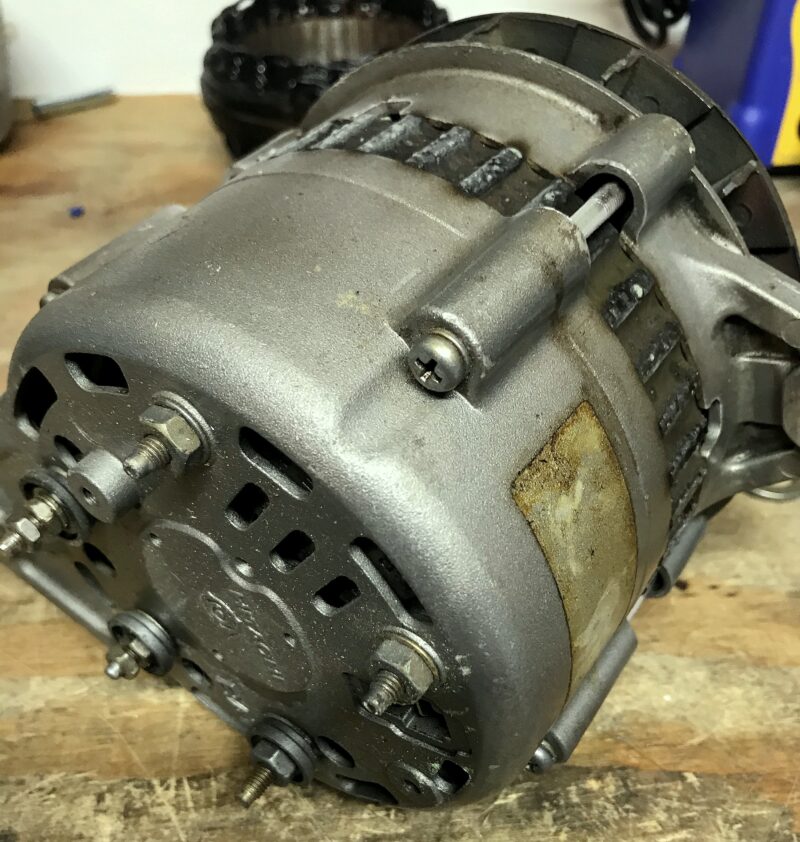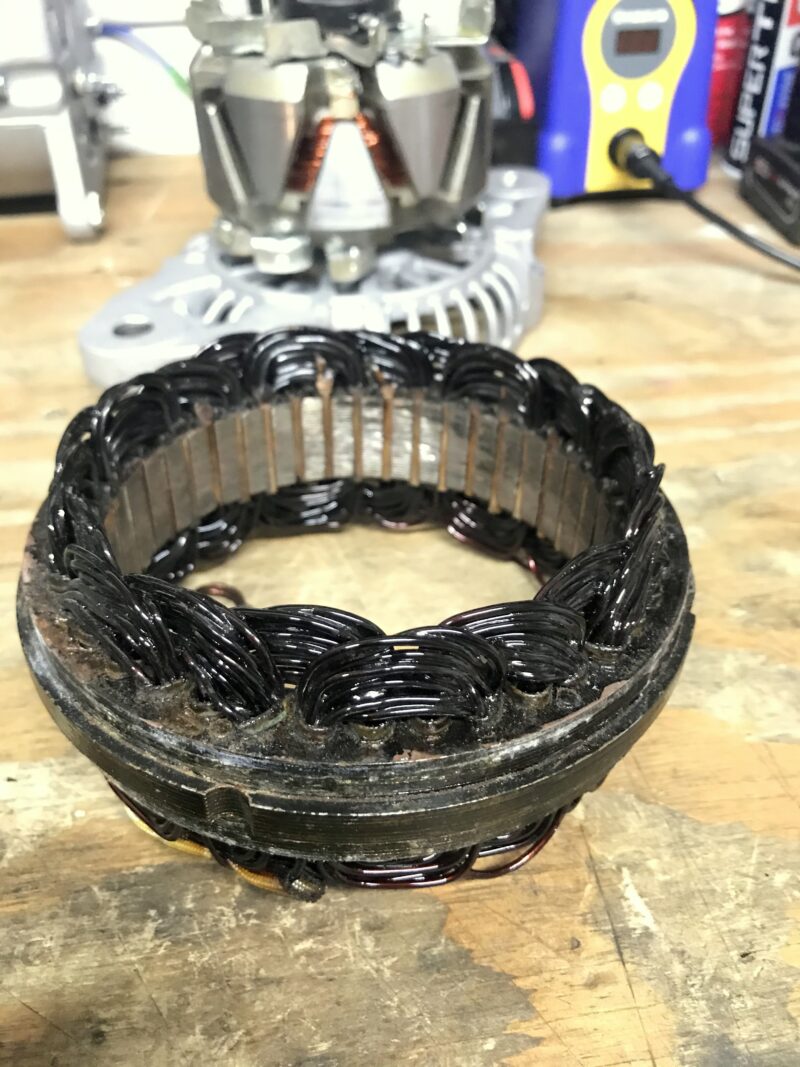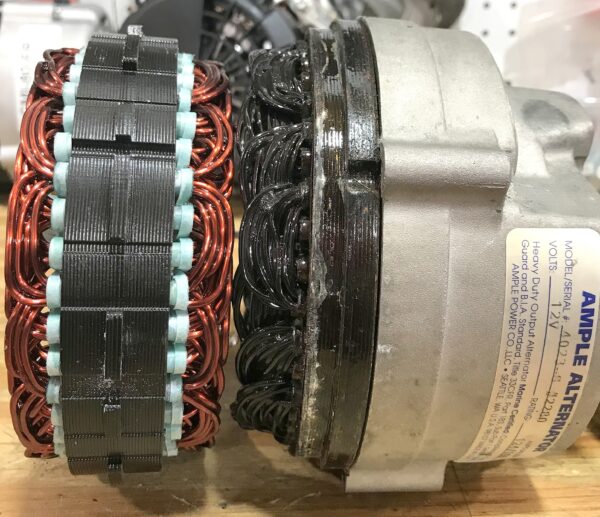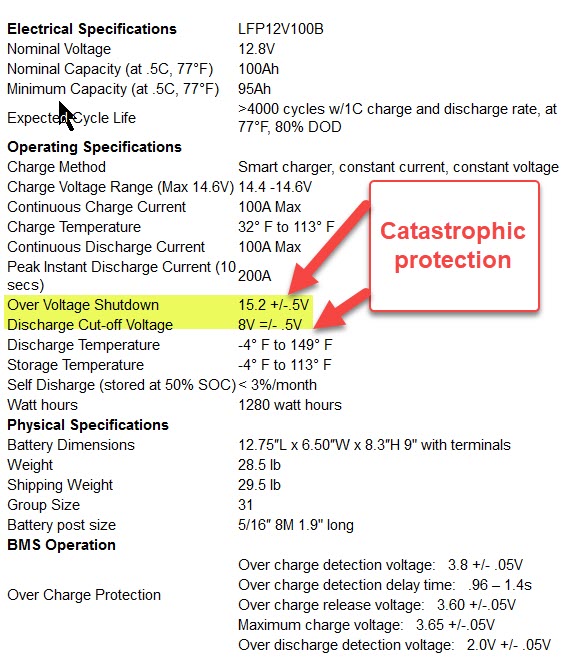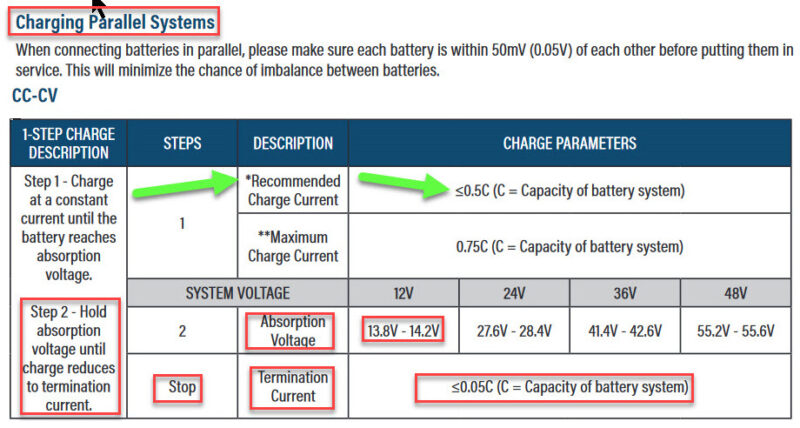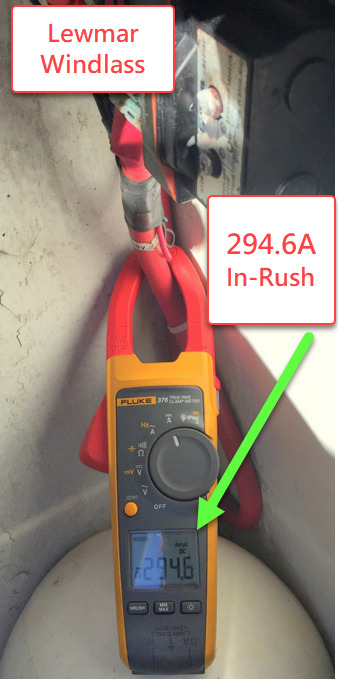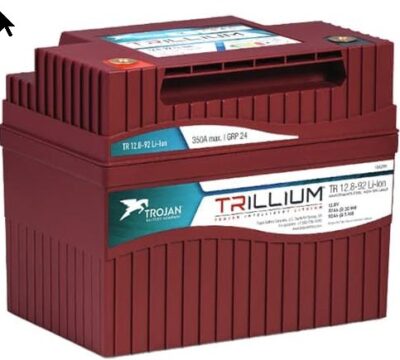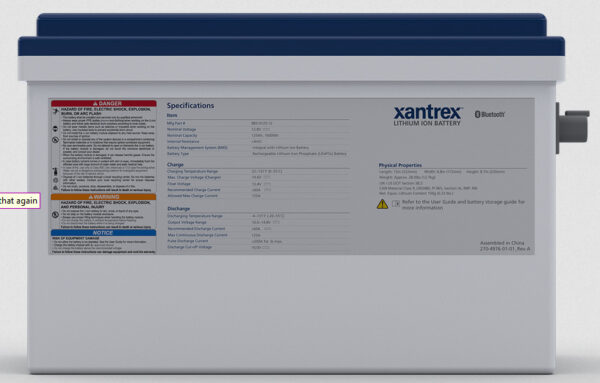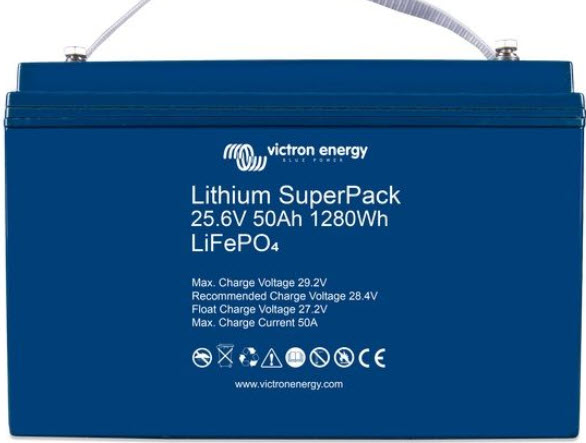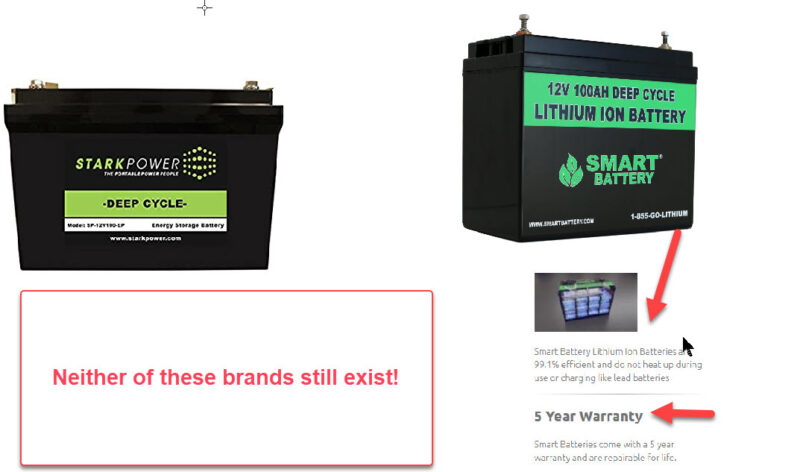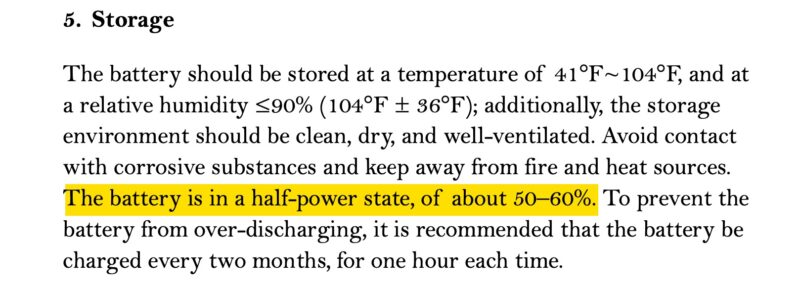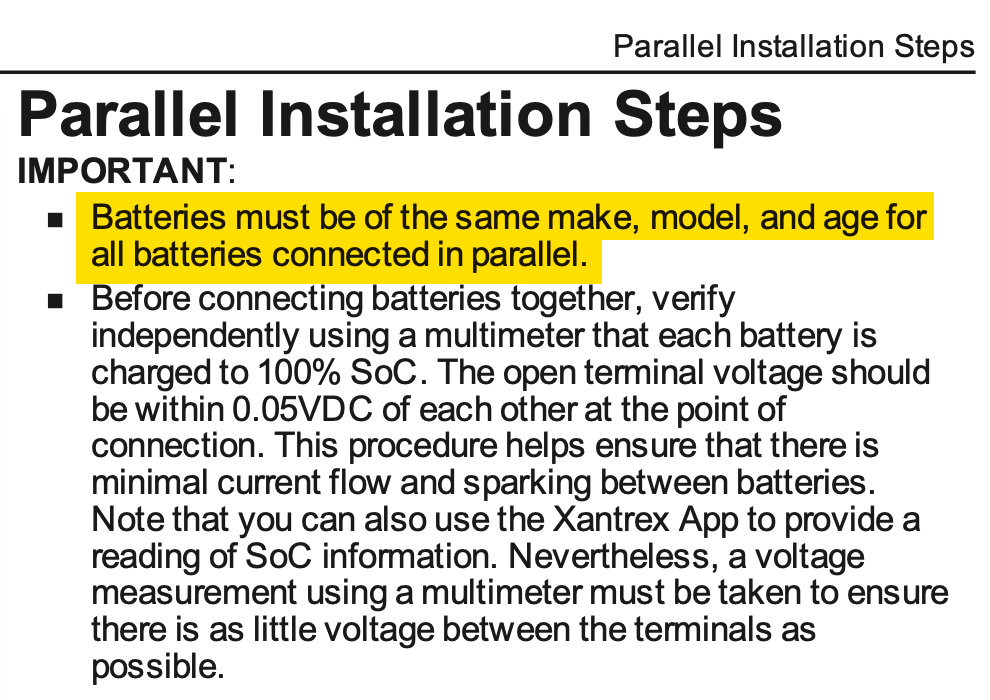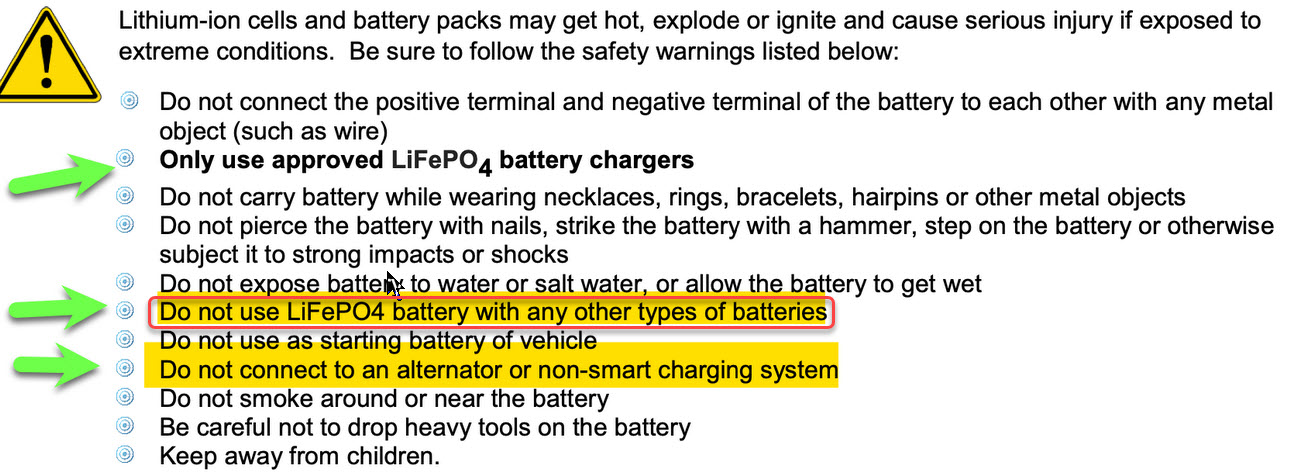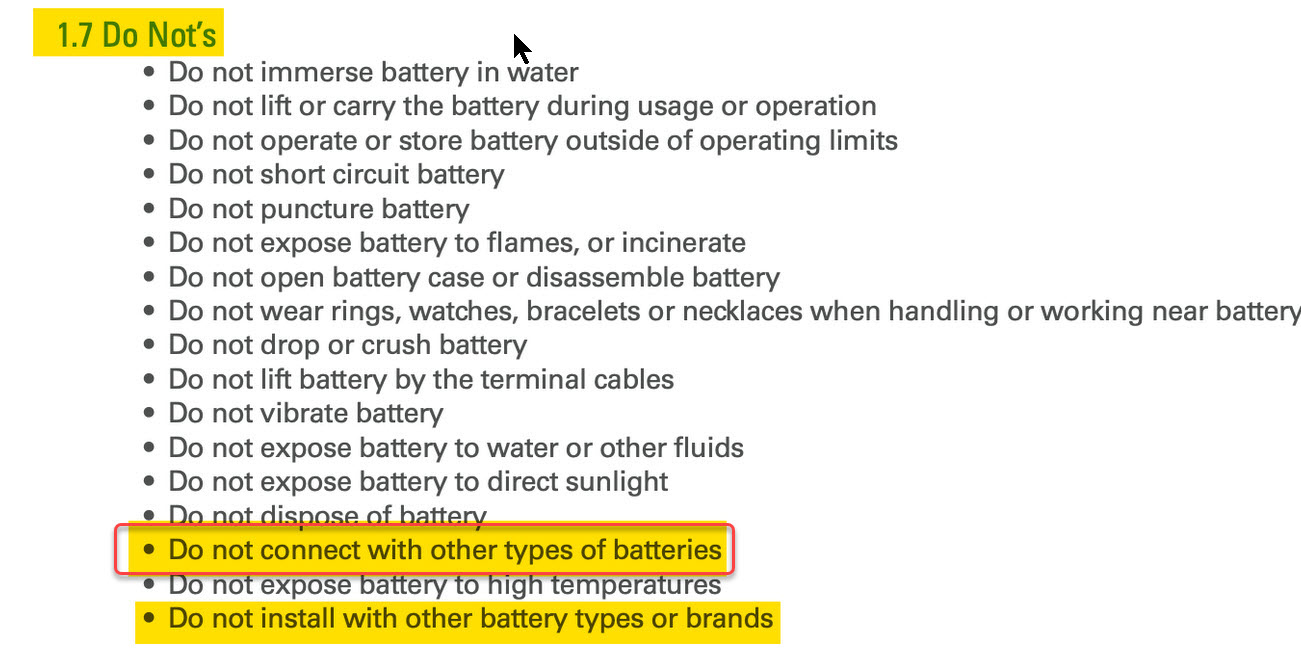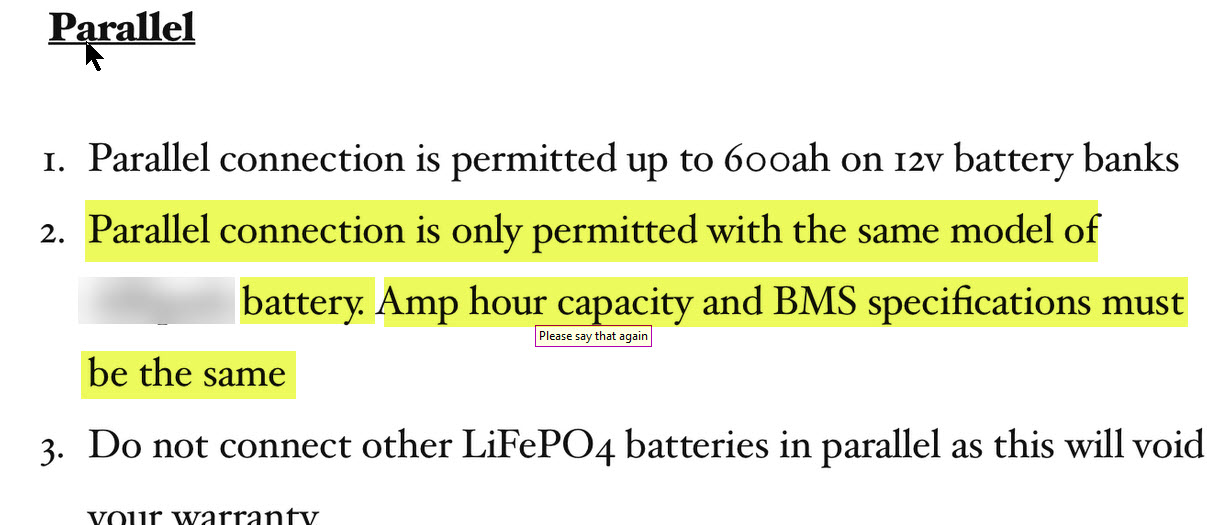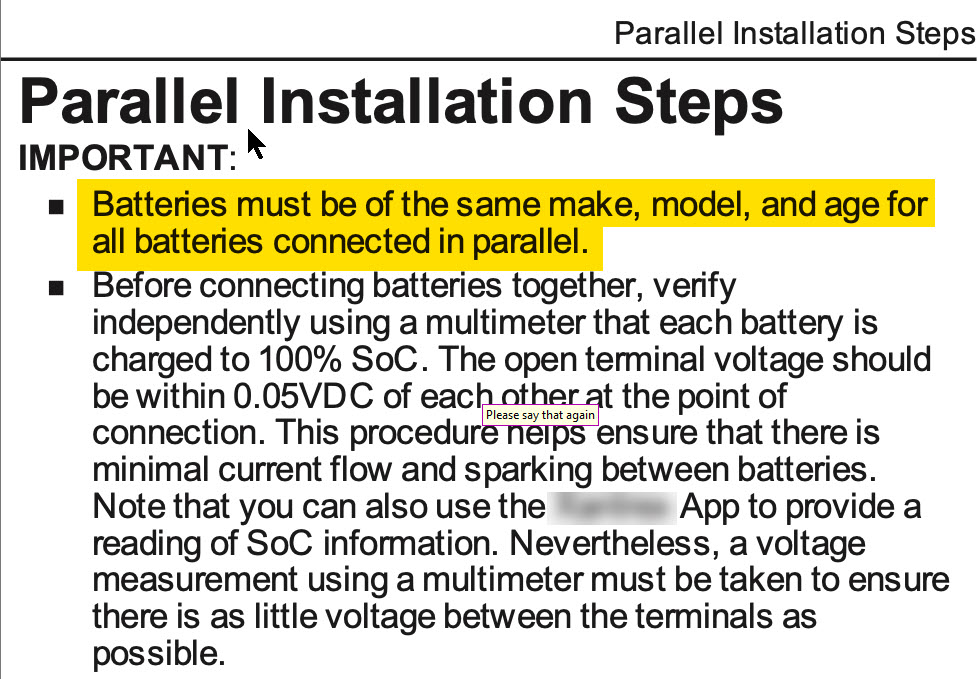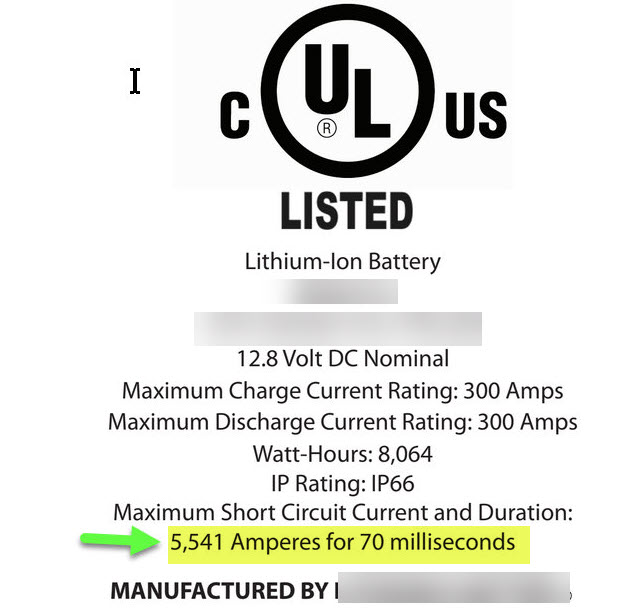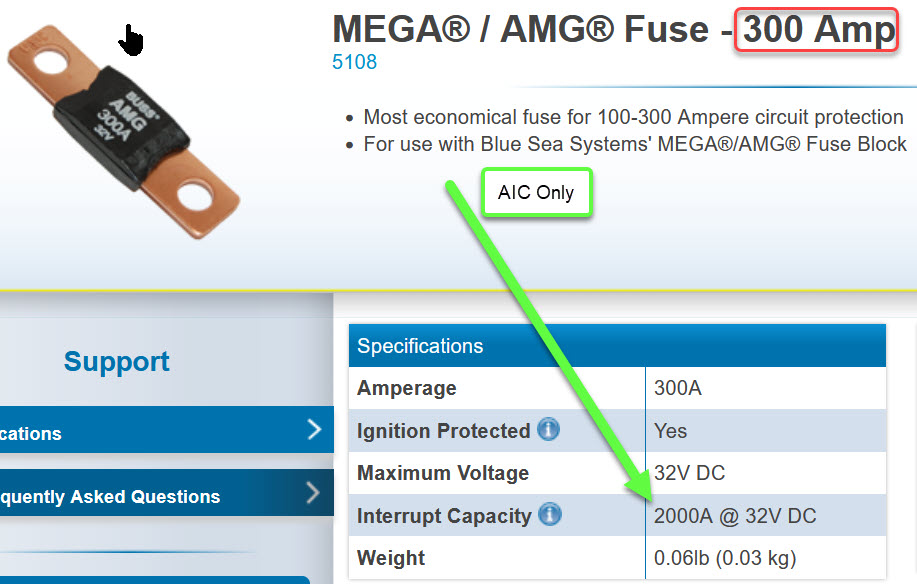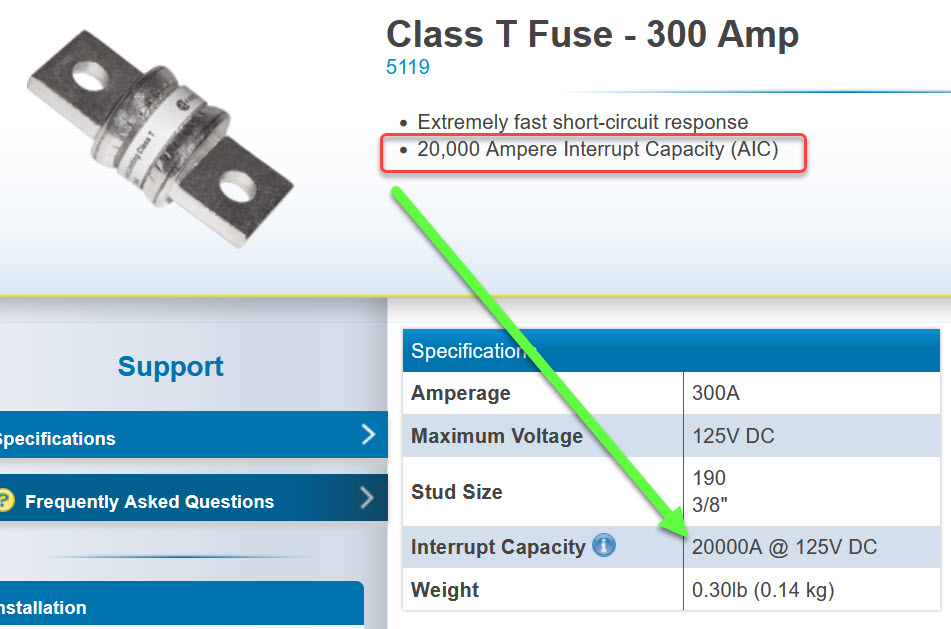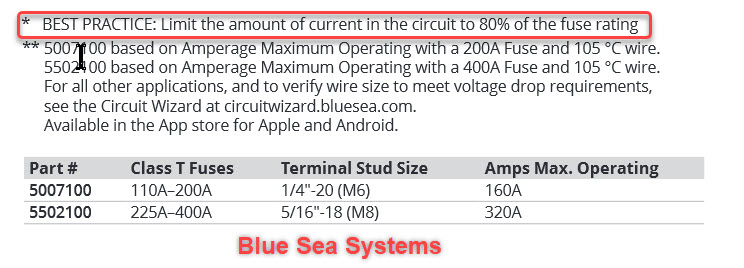Lead is Dead! (except for start batts)
Warning: This article is long and detailed. It may require two reads so the nuances and detail are not missed.
You may be wondering why I am saying lead is dead ? The answer to that is simple; lead acid battery makers dug their own graves by grossly misleading the general public. They know damn well none of these batteries will ever meet the cycle-life claims out in the real-world where PSoC use is a reality. Why? Because the real-world is not a white-coat white-glove laboratory and in the real world “sulfation-happens”.
Recently I was on the phone with the #1 lead acid battery seller on Amazon. This company recently added LiFePO4 because their deep cycle lead acid sales were in a slump. Since adding LiFePo4 the LFP sales are approx 2:1 over their deep-cycle lead acid sales.
Cycle-life Claims vs. Reality
Claims of 1000 cycles or 1200 cycles or 1600 cycles is as laughable as Jim Gaffigan beating Usain Bolt in the 100 meter dash. In a battery use survey conducted on sailboatowners.com, the largest ever of its kind with 1480 users surveyed, the vast majority of boat owners reported they rarely if ever get more than 150 cycles out of their lead acid batteries. 150 cycles!!!!! Many of these are batteries that have claims of 1000 to 1200 cycles or more. Laughable is about the best way to describe it. Lead is dead because the manufacturers dug their own graves by misleading their customers. Perhaps if they had been more honest in setting reasonable cycle-life expectations the mass exodus from lead to LiFePo4 would not be quite as rampant?
The image below is but one example of why I can say lead acid battery cycle-life claims are laughable. I don’t and will never make a claim like this without data.
Capacity Testing = Lead Acid Reality
Compass Marine Inc. has been conducting capacity test on lead acid batteries for more than 20 years. While the equipment for capacity testing batteries has gotten significantly better, the quality of the lead acid batteries has not. This poor customer purchased a brand-new bank of Trojan SCS-225’s in the spring. His boat is on a mooring and he did not have solar. I explained to him the batteries may only last 1 to 2 seasons. He was very surprised that based on Trojan’s claim of 600 cycles to 50% depth or discharge. The results below are not atypical.
63.4% state of health in just one season
By industry standards a lead acid battery is considered end-of-life when it can only deliver 80% of rated capacity. Twenty+/- years of testing marine use batteries to BCI Testing standards has taught us that claims of 1000+ cycles from lead acid are about as fairy tale as Tinker Bell..
Cost: LFP Wins!
Let’s take a look at current prices ( 5/18/24);
Lifeline G-31XT- AGM- 125Ah X 3 375 AHBank=$1797.00- 187.5 USABLE Ah @50%DoD *300 cycles $5.99/Ah
*20+ years of read world experience including many hundreds of capacity tests..
Epoch Essentials 300Ah = 300Ah BANK= $1099.00 for 240 USABLE Ah- @ 80%DOD- 4000+/- cycles= 28 ¢/Ah
Epoch Essentials 300Ah = 300Ah BANK= $1099.00 for 300 USABLE Ah @ 100 %DOD- 2000+/- cycles= 55¢/Ah
Even at 100% DoD the cost per Ah is a Fraction of AGM
Drop-In Pluses & Minuses Preface:
Preface:
This article discusses 12V (nominal) LiFePo4 Drop-in batteries for use on boats.
This was the first article I’ve authored since I suffered a major stroke on September 1 2021 (nearly died). It took me six+ months of recovery to get to this point. I am writing this with new speech to text software(Dragon) which is not easy to master. I only have one finger to type with(my left arm/hand are still paralyzed).. My vision was also affected so working at the computer for more than about 30-40 minutes a day is exhausting(though with hard work my endurance is slowly getting better). My brain is pretty worn out after 30-40 minutes, so an article like this has taken me more than120 hours to author. I’m getting it done but everything is just taking a lot longer. I am committed to MarineHowTo.com and this article is just the beginning of my recovery. I had started the outline of this article back in August before I had the stroke..
Bare Minimum Features
Below are the bare minimum features you want in a drop-in. A Bluetooth BMS is absolutely critical!
Bluetooth BMS
1C rated BMS
*Low Temp Cut Off
*Internal heating
Detailed Owners Manual
Meets ABYC Standards
Meets UL standards
*if your locale ever dips below freezing
Our Recommended drop-in’s?
Our current favorite = Epoch
The Epoch Batteries offer Amazing construction, built in heating ,built-in bluetooth BMS (one of the best we’ve seen), waterproof options, CAN communication, remote display/alarm options, cell compression, even the BMS is made by them not an off-the-shelf product.
Currently Epoch is the price/value/feature leader for drop in batteries. Epoch batteries are built by the best manufacturers in China. The manufacturer of Epoch is a division of EVE. Eve is one of the largest LiFePo4 cell makers in China. This is how they have such amazing cell to cell consistency, they get true EV/automotive grade cells.
EPOCH 10% DISCOUNT:
We have secured a 10% Epoch discount for MHT readers. The Coupon code is; MARINEHOWTO
It can only be used via the link below!
Buy Epoch Batteries- Epoch Batteries
Budget Friendly Drop-Ins
Below we have Included Vatrer & LiTime. Vatrer has all the right features, good build quality, JBD BMS, prismatic EVE cells, BT BMS and internal heating all at an amazing price. These batteries ship directly from the manufacturer but, they both have been pretty responsive on the customer service front. Of all the direct from China brands Li-Time has the best reputation for customer service & support. As Li-Time adds more batteries with Bluetooth we will add them to the store..
Before we ever add a battery to our list we pretend to be a DIY and ask a few questions via email. How the manufacturer responds and how accurately all goes into this decision. Vatrer & Li-Time batteries are an excellent value but they they do lack some features that are found on the slightly more expensive Epoch batteries….
If your budget is tight it’s really hard to beat Vatrer or Li-Time
Budget Drop-In Batteries- Amazon
Join MHT’s Discussion Groups:
LiFePo4 Drop-In Batteries for Boats Group
I Personally Use LiFePo4
It’s important to know that I’ve been using lithium iron phosphate batteries on my own vessel since early 2010 I built my battery bank back in 2009 well before any of these drop-in batteries even existed. My LFP bank will be 15 years old on May 10 of 2023. The bank has in excess of 2500 cycles on it & most every single cycle has been to at least 80% depth of discharge with many many, many cycles (at least 100+ cycles) going to 0%. This 15 year bold bank can still deliver 100% of its 400Ah rated capacity so LFP batteries can last, where lead-acid simply don’t.
Happy 15th Birthday to My LiFePo4
Important:
This article is not intended to pick on any manufacturer at all. It is intended only to make you a more educated buyer. Where it was possible brand names have been obscured..(I do call out one manufacturer but that is rare for me).
Don’t you just drop them in?
No you don’t! Any consideration of LFP batteries on a cruising boat needs to be treated as a system-wide approach just like a conversion to AGM or GEL was.Don’t just take my word for it. Boat US is one of the largest insurers in the US.
“Drop-in replacement for lead acid?”
“Do Not Connect to an alternator”?
WOW!I’ve never seen a lead acid battery disallow connection to a non-smart alternator?? Drop-in?
Terminology Used:
- LiFePO4= Lithium Iron Phosphate also called, LiFe & LFP
- BMS= Battery Management System
- C-Rate- “C “= Capacity and the rate is usually depicted as 1C, .5C.,.33C, .02C etc. A 100Ah battery with a charge rate of .5C would be 50A charge current or 100Ah ÷.5 = 50A
- Load Dump- A BMS Disconnect during charging which disconnects the battery.
- VPC- Volts per cell
- Pack voltage- voltage of the entire battery measured at the packs positive & negative terminals
What is a “drop-in battery?
A drop-in lithium iron phosphate battery is a self contained battery that comes in a standard lead acid case size e.g; group 24,27,31 group 4D, group 8D etc.. This matching of lead acid group sizes ism where the “drop-in moniker comes from. “Drop-in” just means they fit in the same location.. These batteries are self contained and should always have a BMS built in.. Batteries that use an external BMS such as Vicron or some of the Mastervolt or Lithionics batteries are not considered drop-in batteries.
Safety
Let’ cut out the BS right now. LiFePo4 and LiCoO2 (Boeing) are about as different as water and gasoline in terms of resistance to burning/exploding. While LiCoO2 and LifePo4 are both Li-Ion batteries, the chemistries are vastly different in terms of safety. Let’s not forget Flat-Earthers still exist too…
When you see these trolls politely ignore them &, as the internet goes, “don’t feed the trolls“..
LiFePO4 = Li-Ion
Li-Ion= Rechargeable
Lithium = non-Rechargeable
Summary of ABYC LFP Safety Testing
ABYC LiFePo4 Safety Testing Article
Here’s the FAA
Dramatic example of LiFepo4 Safety
The image below is but one example of the safety of lithium iron phosphate batteries. The cells below came out of a drop in battery where the solar controller failed & the 100V+/- array started feeding hundred+/- volts to the batteries. The BMS tried to protect the batteries but once the BMS shut off. in the solar array was still feeding 100V+/- to the chip in the BMS. Once the chip failed the 100V made it to the FET’s and they too failed allowing the full array voltage to get to the LFP Cells. You can read more about this incident in the July issue of Professional Boatbuilder magazine
No fire, no explosion just swollen ruined cells & cell venting.
You can read about this failure here:
Professional Boatbuilder Article Link
The Cells were overcharged so violently that it blew apart the metal case!
HOW IS A DROP IN BATTERY MADE?
A 12 V (nominal) lithium iron phosphate battery is made from four 3.2 V cells wired in series. This is referred to as “4S”. This makes the battery a 12.8 V rated battery. The difference between lead acid and lithium iron phosphate is that each cell in a lead acid battery is a nominal 2 V cell but in a lithium iron phosphate battery each cell is 3.2 V. So, a 12 V lead acid battery requires six 2V cells and an LFP battery only requires four 3.2 V cells.
START WITH THE CELLS & BMS
There are currently three different cell form factors being used in drop-in batteries. the first is called prismatic these are square blocks that nest together and most often require what is called cell compression,the Chinese call this a “fixture” . The “fixture” is used to prevent cell swelling / bulging during charging .
The second type of cell that is commonly used in drop-in batteries is called a cylindrical cell this can be anywhere from the size of a AA battery up to approximately the size of a D battery. Cylindrical cells are quite robust because they don’t need cell compression as the cylindrical form factor prevents swelling. The drawback to cylindrical cell batteries is that they typically require lots of spot welds to connect the cells in parallel cell blocks before they be are put into series series.
the third type of cell for drop-in batteries is called a pouch-cell we typically do not advise pouch cells for use on boats where vibration can be high. pouch cells can be easily ripped and often times they are just dropped into an and aluminum housing that can sometimes have sharp edges. pouch cell drop-ins are getting better and these days have less chance of ripping but prismatic or cylindrical is typically better for use in high vibration environments.
PRISMATIC CELLS & BMS
CYLINDRICAL CELLS & BMS
Pouch Cells
ADD A BATTERY CASE
Clearly I’ve left out a lot of the important details of the manufacturing of a drop-in battery. In order to build a battery properly the cells must be impeccably matched before the the cell block is assembled. By impeccably matched I am talking about cell to cell Ah capacity and cell to cell internal resistance. If the cells are not carefully matched the BMS inside the battery may never be able to keep up with balancing.We have seen this in numerous instances with drop-in batteries.
What is a BMS?
BMS stands for battery management system. A battery management system is used to protect the individual cells inside the battery. Each 12.8 V (nominal 12 V) drop-in battery must use a battery management system. You could also call a BMS a cell protection system as it actually serves to protect the battery cells inside the drop-in battery. The BMS will protect the battery cells from such things as temperature voltage and current. The BMS also serves to balance the cells should they get out of balance. The BMS protects the battery by disconnecting the battery from the charge sources in the loads. Lead acid batteries do not do this.
Market Growth – Drop-In Batteries
In the last two years the proliferation of lithium iron phosphate(LFP) drop-in batteries has literally gone berserk. Drop-in technology has finally advanced far enough that I believe it’s now worth discussing in this marine specific article. I had previously avoided this topic because many of the early drop-in products were pretty poorly engineered, BMS’s had weak power handling etc..
Be Careful Who You Trust
While the internet is full of folks claiming to know what they are talking about sometimes it is easiest to just use a photo. The image below shows the ABYC marine safety standards that I work on. I have been involved with the lithium-ion subcommittee since it was first formed back in late 2013. I was personally invited onto this committee by the committee chair.
I’m also a voracious reader
As can be seen from the image below I have a massive collection of technical documents,research papers& white papers. Everything below is in regards to lithium iron phosphate batteries. I run a 32 inch monitor and I can’t even come close to fitting everything onto one page for a screen grab. This LiFePO4 folder alone has 377 PDF documents on lithium iron phosphate batteries. Yes, I have read them all…
How to Avoid Sleazy Vendors
LFP drop-in batteries have come a very, very long way in the last few years, even the cheap Amazon specials are far beytter than just three years ago. but this does not mean there are no sleazy manufacturers left out there. How do you avoid 98% of the poor LFP products?
Easy; don’t Import directly from China on your own
If you don’t know what I mean by this I would urge you to spend some time on Will Prowse’s YouTube channel but, please don’t focus on his reviews (in a marine application sense), instead focus on how many failures he’s had cutting open & examining drop-in lithium iron phosphate batteries! Please remember that a manufacturer who is sending Will Prowse a battery often knows darn well who he is.. They still fail to send him well-built / well executed batteries many of them lacking cold-weather protection (You can’t charge LFP below freezing) even though they frequently lie and tell him the battery has it. If guys like Will Prowse can’t pick quality batteries out of China how can you expect the average Joe to wade through all the murky information and get good LFP drop-in batteries directly from China? Hey, I’m not complaining, Will has indirectly sent us a lot of paying customers! These customers have had a number of issues with batteries,cells or BMS’ he’d reviewed. We’ve made a lot of money testing these batteries in our lab, only to tell the customer they had been sent “B-grade or reject cells etc… This sort of stuff, has been sold as “A”grade” but, the customer got “B” grade or reject products. This scammery runs rampant on Aliexpress, Alibababa, eBay, Bangood etc. etc. so be very careful when ordering direct from China because you’re on your own once you do..!
Purchasing- Rule#1
Rule number one for purchasing lithium iron phosphate drop-in batteries is that you always want to buy from a well established US or North American company!(This site is read world wide but is still a US based company. (Insert Germany UK, Norway, Sweeden etc. for USA), even if that company is having the batteries manufactured in China.
Currentlyll lithium iron phosphate cells are manufactured in China. Some US manufacturers such as Battleborn, feature t US assemly. This allows them to better control the assembly quality. If you desire good support etc., you’ll want, a presence here on North American soil (insert your country here) to ensure that the company can stand behind the product and you are protected by US (insert your country) consumer laws..
Most of the “bad” images you will see below are what happens when aDIY attempts to become the importer of LFP batteries.These sorts of issues are almost non-existent where a decent US company is behind the importation design & manufacturer selection process.
Always Check with your Insurer First
The image below is from Markel, one of the largest insurers of boats .I can’t help you with under educated ignorant insurers other than to say “ask first”!
Lie on this document& you’re not covered.
Important:
This insurer wants to see a US company, on US soil so they have someone to go after should an accident occur. This is why they demand a company based in the US.
Batteries such as Lithionics (FL), Battleborn (NV), Epoch (SC) Dakota (ND), Relion (SC), Mastervolt (WI), Victron (ME), Trojan (CA), Lifeline (CA) etc. would all meet this criteria.
Batteries that come directly from China such as REDODO, AO Lithium etc. Would not meet this criteria.
Most insurers still allow LFP but please check with them first!
What About the ABYC?
If your Drop-in battery cannot meet the underlined criteria you may want to keep looking. While the underlined is not a “requirement” We have been informed some surveyors are writing systems up that lack this as it is a strong ABYC suggestion. In short a battery with a BT BMS satisfies the highlighted 13.6.6 below..
ABYC TE-13
What About European Safety Standards:
“Rod, isn’t the ABYC is a “voluntary” standard?
Absolutely, but here’s the rub. Every Marina in the United States, and most in Canada, require insurance. If you’re vessel is insured the insurance company has standards they expect. In North America those standards are the ABYC standards. They use Marine surveyors to ensure the boat is safe and up to their underwriting standards. Marine surveyors are currently using ABYC E-13 as a guide for LFP installations and are actively calling out installations that don’t meet the nature of the E-13 document. We get emails about this routinely. Our answer is, as always, do as your insurer requests as finding another policy, especially if your boat is older, can prove to be very difficult..
An ABYC TE-13 compliant installation is what you want to strive for.
YouTube Influencers?
Are They Marine Focused?
Are they ABYC electricians?
I really do like like Will Prowse and I think he’s doing the general public a tremendous service in cutting open all these drop-in batteries and exposing all the dirty little secrets. We too have cut open a slew of these batteries I just don’t do video or video editing well.. The problem I have with Will is that he does not operate in the marine environment and the marine environment is a different set of circumstances & standards than it is for RV or off-grid cabins. For example, I don’t know a single RV that has a 12V bow thruster that can pull over 600A(no load rating) at 12 V and 1600A+for in-rush LRA/FLA rating. An in-rush like this is capable of ruining some FET BMS boards especially after repeated thrusts.
We have had too high a number of readers & a few customers(who self installed) destroy or damage drop-in batteries with their bow thrusters and windlass motors!
The good news is; FET BMS’s are getting bigger and more robust all the time so these issues (wimpy FET BMS’s) may soon be behind us…As you can imagine, it gets very, very expensive when you ruin a battery by applying too much in-rush current.. Be careful taking Wills advice at face value for a Marine application is all I’m saying.
Is Your Vessel a Good Match for Drop-In Batteries?
Use this flow chart to find out
An upgrade to lithium iron phosphate batteries can always be done in stages. We typically advise starting with the charging system first, as your on-board items become antiquated or become failure prone. We suggest upgrading any sort of charge equipment eg; solar controllers, alternators or alternator regulators with devices that can be fully programmed for lithium iron phosphate batteries in the future.Doing this as the items begin to become failure-prone means that in the future when you’re ready to upgrade to lithium iron phosphate batteries your system will be ready for it.
Get Your System Ready
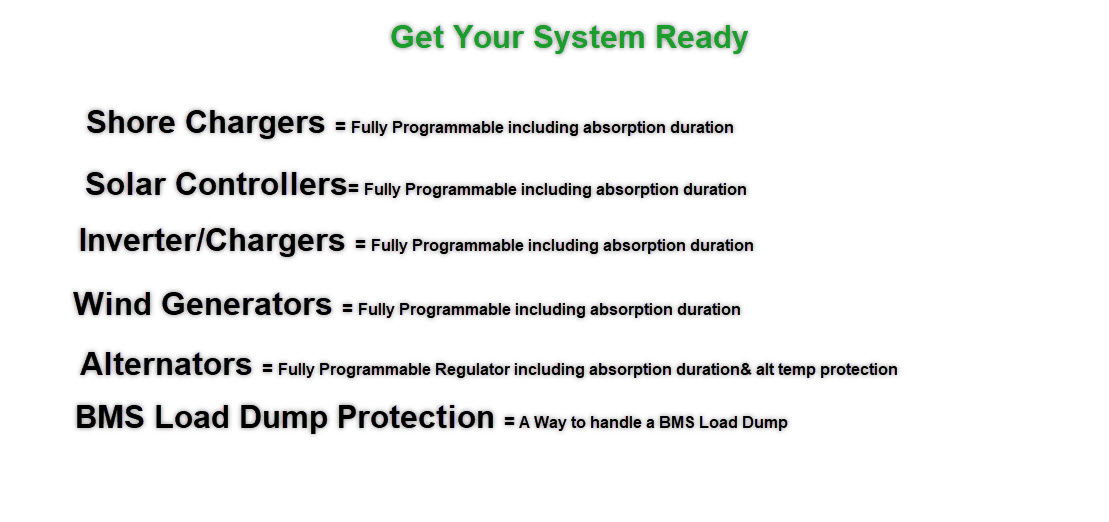 Let’s Look at Drop-In Battery Specifics:
Let’s Look at Drop-In Battery Specifics:
The term “drop-in replacement” is a very misleading moniker, as these batteries are far from a “drop-in” replacement for lead acid on most cruising boats.
Most of the drop-in batteries have been Chinese in origin, and this is not necessarily a bad thing, if you’re buying from a reputable manufacturer. A large number of the US available brands eg; Trojan, Lifeline, Relion, Kilovault etc. are buying from a hand-full of premium Chinese factories. The aforementioned are designing the batteries and having them built to their specs just like Apple computer does..
“A Grade” = Marketing BS
Please understand that the term”A Grade” is really a meaningless-term in China. A-grade really means EV/automotive-grade but the Chinese have figured out that people think “A”grade actually means something…Depending on the seller it may actually mean Abhorrent or Abysmal grade.
For boaters buying drop-in batteries direct from China this can mean the low-grade “orphaned” or “rejected” cells wind up in batteries that may look exactly the same but are sold on Ali-xxxx, , eBay or through other less reputable sources.. Once the cells are sealed in its glued together plastic case you the buyer have no way to know what quality cells you got.
A GRAIN OF SALT
You may ask yourself why I say take Will Prowse reviews with “a grain of salt”? I have yet to see Will’s reviews include a discharge capacity test of each individual cell in the battery. I know darn well why he does not do this …. Time.. We use the exact same computerized capacity tester Will does, plus a few others, but this stuff takes time, lots of time.
Sadly Ali-xxxxx has literally become the numero-uno dumping ground for reject LFP cells and batteries from the Chinese factories. They get away with this because they know the vast majority of DIY buyers have no way properly to test them once the battery case is glued together. Frustrating? You bet it is! Always buy your LFP batteries from reputable companies not directly from China, unless you love to gamble.
Important BMS Considerations
Current Handling
The current rating of the internal switch that protects the battery is quite often too small for the task on many cruising boats. Drop-in LFP batteries routinely use multiple tiny little MOSFET switches as the batteries BMS protection ON/OFF switching. Unfortunately these FET’s often can’t handle the typical loads imparted by many cruising boats. On board devices such as bow thrusters (400A +), windlass’ (100A to 300A+, large inverters 150A to 300A +, electric winches 75A to 300A +, electric cook tops, massive alternators, chargers or large inverter-chargers are very very common on-board cruising boats these days. These are exactly the devices many boat owners are hoping to see a gain in performance from when switching to LiFePO4.
This is what a 120A rated FET based BMS looks like it is pretty for a typical 100Ah drop in battery. This is what an internal FET based BMS boards typically looks like with the heat sinks removed. The blue wires connect to the neg end of the cell string and the black wires are connected to the external negative battery post.fet bms’S DISCONNECT ON THE NEG SIDE OF THE BATTERY This one uses two 10GA wires for its 120A continuous rating. All 120A has to pass through those two 10AWG wires, the printed circuit board and the FET’s. The hotter FET’s run the shorter the MTBF (mean time between failure) is. This Particular BMS ,a JiaBaida, uses 32 FETS(the board has double sided FET’s. We have cut open drop-in batteries with 100A rated BMS’s ( that use only 10 FET’s.(see image below this one)..
What a FET BMS Looks Like
FET QUALITY MATTERS
If you own a vessel with high load devices, do yourself a favor and look at the contactor ratings (the BMS protection switch) that “marine specific” companies such as Lithionics/OPE-Li3, & Mastervolt use for their”marine specific” LFP batteries. What you’ll often see is a 500A continuous rated Gigavac, Blue Sea ML-RBS, Tyco EV-200, or in the case of Lithionics, military grade 500A contactor/relays are being used as BMS protection switches.
Compare that to some of the drop-in batteries being sold out there which can have relatively low-current handling capability due to the use of often under-designed( for a cruising boat)FET based switches. The good news is FET BMS products are improving rapidly! The manufacturers building “marine specific” batteries eg; LFP Mastervolt OPE-Li3, &Victron know what a typical cruising boat needs in terms of current handling and they engineer this into the product. Does this mean you need to use a “marine specific battery? No, it does not it just means you need to choose your drop-ins very carefully for your vessel.…
A Dead FET BMS (windlass in-rush)
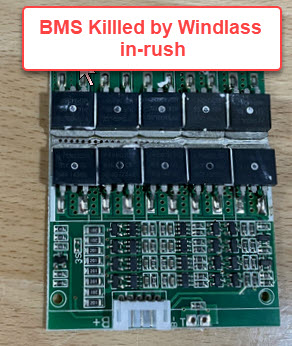
Below is the BMS “switch” used by Mastervolt on their MLI series LiFePO4 batteries. It can handle bow thrusters, large windlass motors, massive inverter-chargers, massive alternators. etc.. The ML-RBS switch is rated for 500A continuous, 700A for 5 full minutes and 1450A for as long as 30 seconds. While many smaller boats can often get by with a FET based BMS, not all boats can, so please consider the max continuous discharge and recommended charge ratings of the battery you are purchasing. This rating is not usually limited by the cells but rather the internal BMS’s current handling capabilities.
Let’s take a look at the BMS switch Mastervolt uses. (Lithionics uses a similar switch on their external BMS batteries.
You read that correctly
500A continuous or 1450A for as long as 30 seconds!!!
Sadly, when buying direct from China,you can still find diminutive 50A continuous rated FET switching BMS’s installed inside a 300Ah LFP battery. As a comparison a 150Ah KiloVault can handle 150A continuously or 200A for as long as 30 minutes. While a 50A rated BMS may be fine for small boats, if you have large on-board DC loads, or want to charge a 300Ah battery quickly, then a battery like this is going to be a less than ideal battery for marine use. So, you still really need to do your homework to make sure the batteries & the internal BMS are a fit for your vessel.
Assembling a Drop-In Bank for Large DC Loads
When it comes to FET based BMS batteries we typically advise smaller individual batteries, wired in parallel. This is done to share the load across the FET based BMS’s. For example three 100Ah / 1C rated LFP drop-ins can theoretically handle a 300A discharge, if the parallel wiring is perfect and all batteries share the load equally(rarely happens that way.) A 300Ah 8D format drop-in, like the one addressed below, can really only handle a 100A (0.33C) discharge. When in doubt with FET based BMS systems smaller batteries in parallel are usually a better solution than one large battery with a low current rated BMS.
A Drop-In Battery Spec sheet SHOULD Look LikeThis
*Highlighted specifications are the critically important ones.
Minimum Absorption Voltage (to Initiate Cell Balancing): This is important because you need/want to activate balancing with each charge cycle. You also want to avoid pushing to the maximum charge voltage every cycle if you wish to maximize cycle life.
|
High Internal BMS Temperature Discharge Cut-Off: same as above but for discharging.
|
If you are unfamiliar with what the specifications mean or why they are critical you may want to reconsider drop-in batteries until you have completed the research phase.
Vibration
Many of the very cheaply sourced drop-ins are using 18650, 26650 or 32650 cylindrical cells inside the battery case. In a worst case, a 100Ah LFP battery, built from 18650 cells, would need a grand total of 364 cells with two connections per cell.
How’s that math work?
18650 Cell = 1.1Ah (typical Ah rating for an 18650 LFP cell)
91 Cells Make Up Each 3.2V cell
Four 3.2V Cells Make Up a 12.8V 100Ah Battery
91 X 4 = 364 18650 Cells
Positive & Negative Connections Inside The Battery = 728
If the manufacturer uses 5Ah 32650 cells, and some do, we then only need 80 cells total, and 160 spot welds or bolted connections to potentially fail or work loose. (32650 cells are available in bolted or spot weld versions)
The connections, with 18650s’s, are almost always spot welded to end boards that make up the individual cells. So, in a single 100Ah battery, made of 18650’s, just to connect the cells, we have as many as 768 spot welds to rely on. Beyond that we have all the internal wiring and BMS connections. These spot welded assemblies are often just dropped into the polypropylene case with no other support or vibration dampening material. To be safe, always be sure to ask the battery supplier to furnish third party vibration testing results or testing to UL or IEC vibration standards.
DC Motor In-rush
The reason most drop in batteries cannot be used for starting is the in-rush. The in-rush of large DC motors looks like a dead short to the FET’s. Imagine sitting there and intentionally shorting your battery multiple times each day…..That is what starting your motor, running a windlass, electric winch or Bow thruster looks like to the FET’s. There are LFP batteries that can be used for starting but they are very expensive at this point in time.
Starting a 40HP Westerkeke takes=640A!!!!
Cylindrical-cell battery failure
Cylindrical cells are great performers but like anything the devil is in the details. Do you know how well your battery is put together? Battleborn uses Cylindrical cells and their construction is top notch but, not all drop-ins made from cylindrical cells can be compared to Battleborn.

How did we discover the spot weld failures? The zipper like discharge graph was a dead giveaway.. After a discussion with the manufacturer we had to tell the customer to stop using his bank immediately…It had also lost significant capacity from over charging. His lead-acid charger that held 14.6V way too long 4 hours on every cycle. We were testing them for capacity when we discovered the spot weld failures (brand purposely obscured). In the screen grabs below you can see how varied the voltage was on discharge.We had wanted to run the discharge at 40A but the zippered graph was even worse at 40A so we ran the capacity test at 10A..
Data point = 12.702V
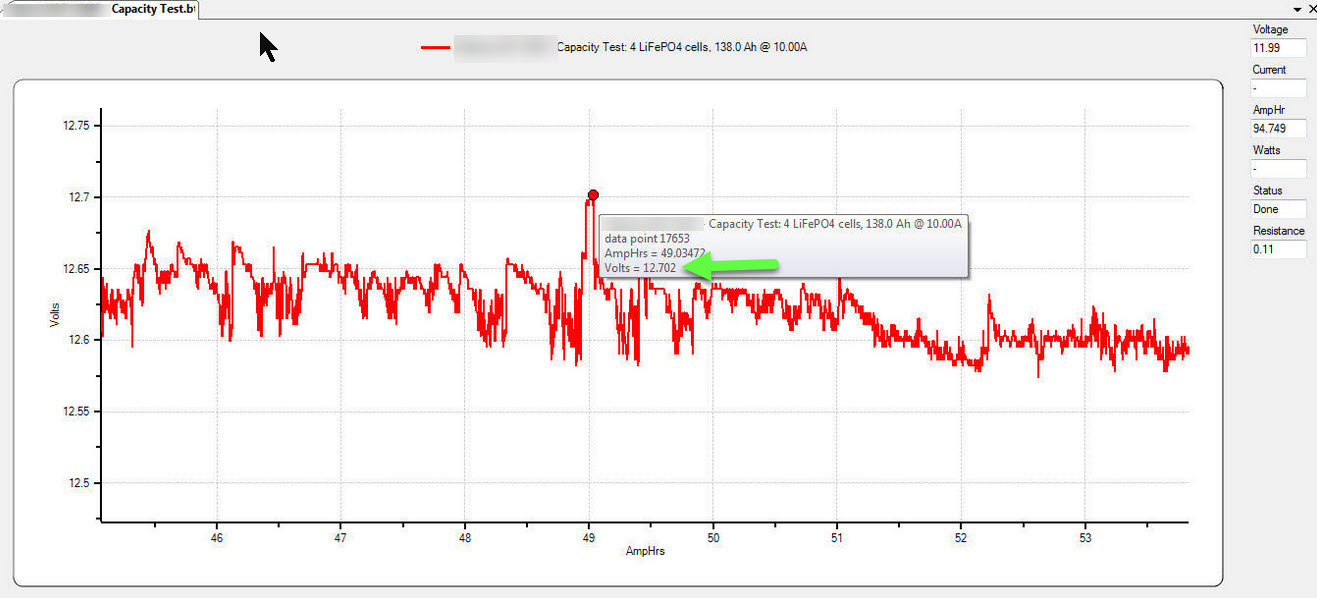 Internal Wiring Shortcuts
Internal Wiring Shortcuts
What happens when you cram multiple small wires into one terminal and ask them to carry 100A +/-Hint: You get terminal melt down.. Epoch batteries has a positive & negative terminal temp sensor to identify high resistance before it starts a fire.

Here’s what they look like when you hit them with thermal imaging.
The Internet said LiFePO4 is 100% safe
No battery chemistry is 100% safe, especially when you over charge it.(However no-fire , no-flames & no explosion just cell swelling and heating… FWIW this “starting battery” has zero BMS Protection. A BMS is required under ABYC and ISO.
Prismatic Cell – Over-Charged
This is what over charging looks like.
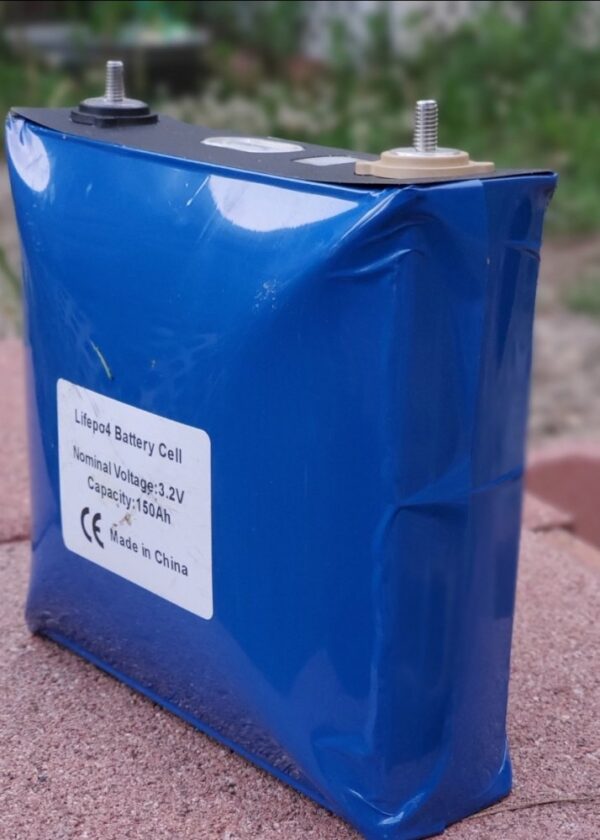
Cell Compression
Below is what proper cell compression for aluminum prismatic cells looks like. Has your chosen manufacturer included this? The Epoch batteries (our current favorite) use cell compression. Really top notch stuff. While there are a few aluminum prismatic cells that use thick walled aluminum cell cases, and they don’t require cell compression, most aluminum cells do. Lots of manufacturers use thin-wall aluminum cells just dropped into a plastic case.
What Good Quality Looks Like
Thehe photo below is a Lithionics G-31 drop-in battery. This battery uses impeccably matched aluminum encased 5c LiFePO4 cells. The cells are fixed in place by an injection molded jig that protects them from movement and vibration failures. The busbars are high grade nickel plated copper and self locking flange/wizz nuts are used to hold the cells to the busbars. The BMS used in this battery is certainly FET based but it is made here in the USA, of Mil-Spec components, and is Lithionics
Epoch
For the price and feature level these batteries simply cannot be beat. The image below shows a feature that goes far beyond any brand we’ve seen. Epoch puts a temp sensor on the positive and negative terminals to protect the battery if there is a high resistance connection.
Internal Wiring
It is not uncommon to open a 100Ah drop-in battery, rated at 1C, and find a single 10GA or 12GA wire feeding the main positive and negative terminals. When someone finds a 10GA or 12GA wire rated for 100A, under any safety standard, please let me know?
Lithionics 320Ah drop-in.
BMS Shortcomings
Lack of low or high-temp Protection
Some of the drop-in batteries may lack BMS temp protection altogether . Drop-in batteries should have both low and high temperature protection (a requirement for both ABYC and ISO) but many don’t. Far too many drop-in batteries lack low temp protection and a large number of manufacturers who claim it has low temp protection are actually lying about it. If You live up North,buyer beware!
Non-Communicable BMS
For a trolling motor, who cares? It’s not powering anything critical. For a house battery, on a cruising boat that ventures off-shore, and is powering critical navigation and safety equipment, this can create a dangerous situation. A non-communicable BMS is one that cannot communicate externally with the vessels charge and load systems, or even you the owner. It has no means of externally communicating or sending/sounding warning alarms or activating relays/triggers to properly and safely disconnect charge sources or give ample warning of an impending BMS disconnect. Some batteries are now featuring Bluetooth monitoring but this still requires you the owner to be watching it.
Let’s take a look at one of the worlds most respected marine standards for shipping etc., Bureau Veritas.

As can be seen, under Bureau Veritas standards external communication between the battery and the rest of the systems such as charging is a requirement. For why see below.
WHAT ABOUT CHARGING?
LFP batteries are charged using a CC/CV profile. This means constant-current/constant-voltage
Bulk = Constant-Current(charge source working flat out or as hard as it can)
• Absorption = Constant voltage( voltage is held steady for a short time or until current declines to the manufacturers spec.
• Absorption Duration = Once the batteries have achieved the absorption voltage the time the batteries spend at this voltage must be limited. Many lead acid charge sources spend far too long in absorption and this is not healthy for LFP
BMS LOAD DUMPS
DON’T FORGET YOUR ALTERNATOR
Unfortunately the reader above learned the hard way. Ask yourself what happens when your alternator is in bulk charge, supplying all the current it can, and the internal BMS decides to “open circuit” or disconnect the battery from the boat? I’ll help out a bit here.
BMS Load Dump Illustration
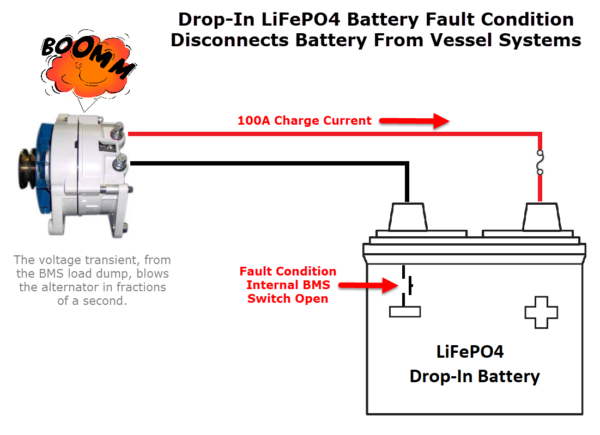 What a Load Dump looks like
What a Load Dump looks like
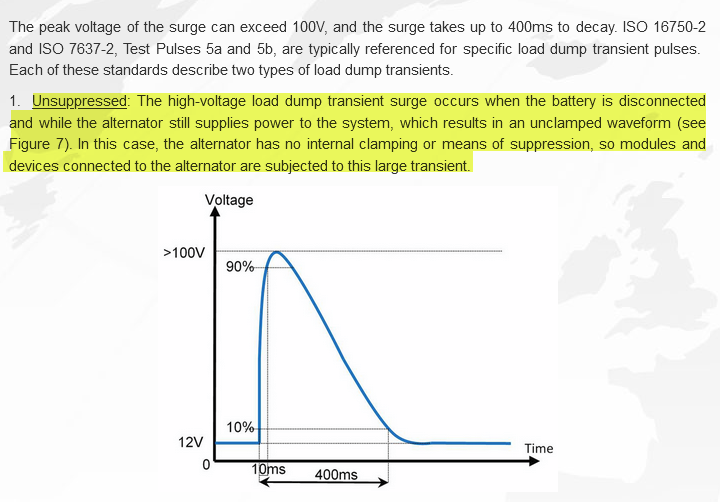
The load dump transient captured in the above image is from an ISO test of a 12 V automotive alternator. Of important note is how quickly this transient surpasses 90V.
Surpasses 90V in just 0.01 seconds
A) The alternator diodes, unless avalanche style, (rare in many existing marine alternators)can be blown.All Balmar alternators now use avalanche diodes, Two years ago we did exactly this. Using the alternator test bench here at CMI the 90A alternator was running at full bore charging an LFP battery. The “system” I set up had a .3A dummy load on, a light bulb, to simulate a depth sounder. With the alternator running at full bore I disconnected the battery, just as an internal sealed BMS can do for BMS temp, cell diff-voltage or cell high voltage. Poof went the alternator diodes and the light bulb was burned instantaneously! Worse yet the voltage transient I recorded on the “load bus” (think your navigation electronics) using a Fluke 289 was 87.2V. Ouch. Even if your alternator uses avalanche diodes, like Balmar’s do, the voltage at which they begin to protect the alternator is far too high for the vessels load bus equipment so you still need a way to protect against a load dump.
B) If the boat is wired, as is typical with drop in batteries, the voltage transient caused by the open circuited alternator will now directly feed the DC mains and potentially destroy your navigation equipment.
TIP:
At a bare minimum, every drop-in LFP battery bank, that can be charged via an alternator, should be installed with an Alternator Protection Device. We like both the Sterling APD and the Balmar APM.
Buy a Sterling Power Alternator Protection Device
Buy a Balmar Alternator Protection Module
A well designed marine specific BMS would open a relay that can de-power your charging sources on the input side, thus shutting the charge sources down correctly and safely with no risk of a damaging voltage transient. For a large inverter/charger it would de-power the AC input side, for an alternator it would de-power the field wire or regulator B+, for solar it would open a relay in the PV feed etc. etc.. With a drop-in battery, that features a sealed BMS, you have no way to do any of this. Only Lithionics Drop-In Batteries have this Capability.
What If program my sources below the BMS disconnect?
Sounds like a good plan right? Well, lets examine the most common reasons a BMS can disconnect
programming a lower charge voltage can’t always protect against a BMS disconnect
Are BMS Load Dumps Real?
I’ll let Balmar Explain this;
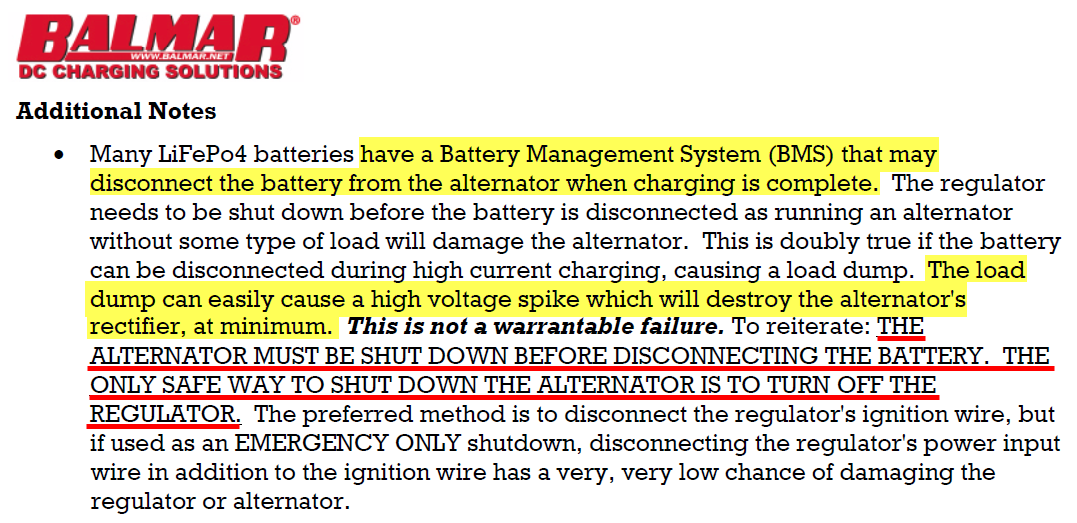
How about a fairly knowledgeable owner who bought a very beefy alternator and still killed it due to BMS load dumps.
Drop in batteries with the exception of Lithionics do not yet have a way to properly shut down the alternator before the battery disconnects. For this reason we need work arounds.
The number one reason we see batteries shut down(when everything is programmed correctly) is almost always due to BMS temp related issues not necessarily high cell voltage..
Mitigating Load Dump Damage
A good technique to mitigate load dumps is to keep a buffer “load” on the charge bus at all times (Buffer load = lead acid battery on the systems charge bus (see the Victron ARGOFET Isolator wiring below). With FET isolators, we like to see them at least double the rating of the alternator eg; a 200A ARGOFET for a 100A alternator. The cooler FETs run the longer they last. And yes, we have seen FET isolators fail…
Buy Victron Argofet – Bay Marine Supply
Load Dump Work-Around’s
Using Low Volt-drop FET Isolators with an externally Regulated Performance Alternator
USING DC to DC CHARGERS
There are many benefits to using DC to DC chargers. One of those benefits is that the charge profiles can be custom configured to charge lithium iron phosphate batteries where your factory alternator or legacy lead-acid charge equipment cannot be programmed for this. The Victron Orion TR Smart and Sterling power DC to DC chargers can also absorb a load-dump from a BMS disconnect where your factory alternator cannot.
Sizing a DC to DC charger
Caution needs to be used when sizing DC to DC chargers. A DC to DC charger should be sized at a maximum of 50% of the factory alternators rated output. This means if you have 100 amp factory alternator the maximum DC to DC charger you should use is 50A. This will help keep the alternator cool and keep it from burning itself up. Currently there are only two DC to DC chargers we recommend and those are Sterling Power and Victron.
The only drawback to using DC to DC chargers is that you give up charging your lithium ion phosphate batteries quickly. Seeing as that is one of the major benefits of LFP batteries we would strongly advise considering an externally regulated alternator with an external regulator such as the Arco Zeus, BamarMC-618 or Wakespeed WS-500 these regulators can be programmed for LFP and have an alternator temperature sensor to protect the alternator from heat damage. This will also result in considerably faster charging!
Warning:
I don’t often do this as I hate to ever advise against any manufacturer but there is one manufacturer that we would urge a very strong caution on and that is Renogy. We’ve not seen a manufacturer with this many failure prone products in 30+ years in this market. Beyond the higher than normal failure rate the company has the absolute worst customer service I have ever experienced.
You can read about the Sterling DC to DC Chargers HERE.
Using DC to DC chargers Results in Slower LFP charging
CAN I USE MY STOCK ALTERNATOR?
The short answer is we do not advise this for charging lithium iron phosphate batteries directly.You can however use your stock alternator if i it is behind a DC to DC charger that serves to protect it and that provides the proper charge profile for the lithium iron phosphate batteries.
WHY?
1-A stock alternator rarely has the correct charging voltages for lithium iron phosphate batteries.
2-They can over absorb the batteries resulting in over-charge damage
3-The absorption voltage is very often too high (see below)which can lead to BMS load-dumps
4-Stock alternators do not FLOAT, they only do bulk and absorption.
5-Alternator heat damage
Do You know the voltage set point of your stock alternator?
We have been an alternator manufacturer for more than 15 years so we understand internal vs. external regulators and how these alternators are built. We also have access to data, such as you’ll see below. This is data the average DIY would never have access to.
Max Charge for a 12V drop-in battery is 14.6V or Lower.
Common Internal Voltage Regulators
IF your BMS Disconnects at 14.6V / 3.65VPC a reg with a 14.6V set-point is likely to cause you BMS disconnect issues.
Alternator heat damage
LFP batteries have a tendency to enjoy eating alternators for lunch. The internal resistance of LFP batteries is extremely low resulting in very long bulk-charging times. As a result alternators can burn themselves up trying to charge these batteries. I’ve said this many times before on the site and I will say it once again, there is no such thing as a small frame alternator that is continuous duty, I don’t care who built it! Because Compass Marine inc. is a manufacturer of marine alternators so we get to see these failures regularly. We are not an n=1 data point like the “dude on the internet” who says your stock alt will be fine charging LFP. We have seen far too many alternators completely melted down by LFP batteries to ignore this information..
If you insist on using your stock alternator we would strongly recommend that you put it behind a DC to DC charger (50% smaller than your alternator amperage rating. This will help limit the amount of work the alternator is doing and protect it from a meltdown.Doing this means you can continue to use your stock alternator.
If you expect to charge lithium iron phosphate directly from the stock alternator without a DC to DC Charger in-between, we advise not changing a thing. Do not increase the wire size to the battery bank ,do not move the volt sense a wire do not touch zdthe factory wiring .Doing so can result in an alternator meltdown. The typicalfactory wiring on these alternators is horrible and results in a lot of voltage drop. That in and of itself can help protect your alternator from melting down.
Why does LFP cause heat damage?
It is very simple your alternator never catches a break!
Our Alternator Assembly Bench on a Typical Day..
Don’t be this guy!
ImageCourtesy MHT reader
Stock Yanmar/Valeo Alt Cooked
Yanmar/Hitachi alternator Cooked
Burned up Stator From Charging LFP
Another One
Another LFP Cooked Alternator
But, Ample built good alternators?
Yes, they did but during this vintage Ample Power did not believe in using an alt temp sensor on their regulators.. When LifePO4 came around…This alt ran fine for 20 years charging lead acid Within weeks of converting to LFP.,toast!
Series Wired Systems ?
In a parallel wired bank one battery BMS dropping out only creates problems when it re-engages into a different SOC than the rest of the bank by causing a large in-rush. With a series bank (for 24 V 36v or 48V a single BMS taking itself off-line spells disaster at sea and takes out the entire bank. I know a Drop-in owner who hit a granite bridge abutment in his electric boat using a 48V series bank of drop-in batteries. It did a few thousand in damage to the boat, and his pride, but it could have been much worse. The owner had zero warning the battery was about to disconnect itself before he lost all propulsion power. This failure occurred going under a drawbridge in a very strong tidal current. This is but one reason why the ABYC & ISO European audible or visual warning suggestions make sense.
Kilovault will soon be out with a communication system for series wired batteries so they stay in balance.We do not advise series wired drop-in batteries unless the BMS’s can communicate with one another. Parallel batteries stand a much better chance of remaining in-balance, series batteries do not unless the BMS boards can communicate with one another.
CATASTROPHIC PROTECTION VS. CELL HEALTH PROTECTION
Please don’t assume every drop-in battery BMS will manage your battery for maximizing cycle life, it may not do that! The BMS in many drop-in batteries is designed for catastrophic level protection only. Catastrophic protection means the BMS is only there to protect the cells from thermal run-away conditions.
A catastrophic BMS has disconnect voltages exceeding 15V for a 12V nominal battery. The max safe cell voltage for an LFP cell is 3.65V X4 cells = 14.6V max. It is up to you, the owner, to ensure the battery never exceeds a safe operating envelope even if the BMS allows for this. Well built drop-in batteries use an internal BMS that actually protects the battery from a maximizing cycle life perspective. Batteries built to maximize cycle-life will have much more conservative HVC and LVC voltage levels.
TheBMS on this battery is built to maximize cycle life: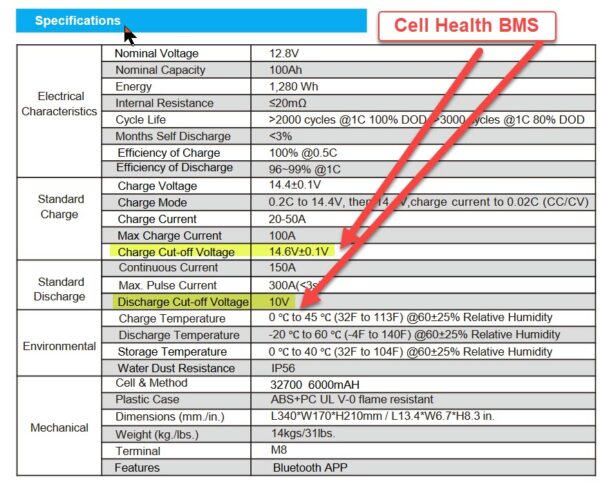
Avoid batteries that allows the cells to exceed 14.6V/3.65VPC
CHARGING LFP WITH OTHER SOURCES
LFP batteries are charged using a CC/CV profile. This means constant-current/constant-voltage
Bulk = Constant-Current(charge source working as hard as it can see burned up alternators above)
• Absorption = Constant voltage( voltage is held steady for a short time or until current declines to the manufacturers spec.
• Absorption Duration = Once the batteries have achieved the absorption voltage the time the batteries spend at this voltage must be limited. Many lead acid charge sources spend far too long in absorption and this is not healthy for LFP.
Do you know what this means?
max charge voltage 14.6V
max charge current 20% of installed Ah Capacity
When at 14.6V all charging must stop when accepted charge current has dropped to 0.02C or 2% of installed Ah capacity
Can Your existing charge system do this?
Pay Attention to Small Details
When installing these LFP batteries in parallel the max charge voltage is just 13.8V-14.2V (it’s 14.6V for a single battery “small details”)
Max charge current is 50% of installed Ah capacity or .5C.
When at 13.8V – 14.2V and charge current has fallen to 5% of installed Ah Capacity all charging MUST STOP
Can Your chargers do this?
 Can Your charge sources be programmed for these parameters?
Can Your charge sources be programmed for these parameters?
Charge Voltages – Follow the manufacturers guidance!
Some drop-in batteries are not using cells that are impeccably matched.
Unfortunately, with many “drop-in” batteries you don’t really know what is inside, or how well matched the cells or cell blocks are. You’re essentially shooting darts with a blind fold on. Lithionics, Battleborn Epoch and Kilovault are in a very small group of manufacturers that take quality & cell matching to the level it should be.
Series Solar Warning!
Over the last few years on boats one of the trends that can be a little terrifying has been that solar panel array voltages have been creeping up and up.. Many boat owners want to install their solar panels in series and then run them through an MPPT controller to maximize the energy capture of the array.
This is all well and good until there is an issue and the MPPT controller fails. Imagine what happens if you’re MPPT controller fails and starts passing PV voltage through to the batteries? If your array is over 60V & these are lead acid batteries they will eventually explode. If they are lithium iron phosphate drop-in batteries you will toast your BMS! Once the BMS is been fried by the solar array voltage you have no BMS protection & the solar array will continue feeding dangerous voltage to the batteries until they are destroyed. You can imagine what will happen if this continues to go on after in an MPPT failure. In case you’re wondering yes, these failures have happened and lithium iron phosphate batteries have been destroyed due to this. These failures almost never occur in tier-top tier supplier MPPT’s.
How do you avoid this?
#1-observe the maximum number of series batteries you can wire for. With most brands limit this is 24 V or 48 V. This voltage is typically the maximum SAFE voltage the battery bank BMS CAN handle. So, your PV array should not exceed this voltage.
#2 if you wish if you wish to use series-solar on your vessel you will be safer to split the array into smaller series strings that remain below the batteries maximum series allowable voltage and give them each their own MPPT solar controller.
#3 Use only top tier MPPT suppliers (eg; VICTRON, OUTBACK, MIDNITE, MORNINGSTAR ). These controllers use isolated input/output and are designed not to fault in a manner that passes full PV voltage through to the batteries..
Pack Voltage vs. Cell Voltage
Pack voltage tells you nothing about cell voltage as can be seen below!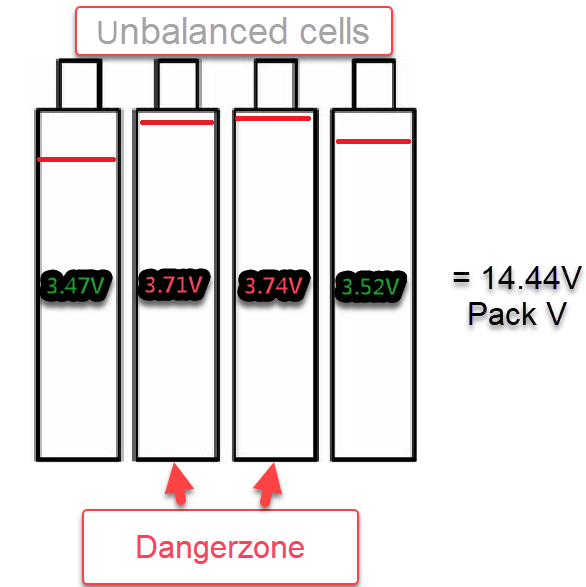
Know your loads before you buy!
The critical load data you need to know is the in-rush current for all DC Motors .This includes a windlass, electric winches or a bow thruster. You also want know your inverters Pre-charge in-rush. Unfortunately most DC Clamp meters cannot properly capture DC in-rush current. We own three DC clamp meters that claim to do in-rush but all except the Fluke meters fail miserably. The image below is one of our Fluke 376 meters capturing the in-rush current for a Lewmar V2 Windlass. This customer ruined his FET BMS (seen in an image above in this article) byusing his “direct from China” drop-in battery to power his windlass. Warranty? Ha-ha now that’s funny….
The image above is a prime example of how drop-in battery bank went wrong for this customer. he wanted to lighten the load in the bow of his sailboat so he installed a single drop-in battery to power his windlass.What he failed to understand was the BMS’s current handling rating . In just a few short weeks he destroyed his drop-in battery with his windlass when he failed to account for what the peak in-rush current handling of the BMS., Warranty? Not covered!
1) Balance current-The sealed internal BMS’s in most drop-in batteries don’t have a lot of balance current to work with, usually mA level currents for balancing. We have even seen some BMS specs suggesting they can only balance the cells at a maximum 10 – 30mA or just 0.010A to 0.03A.If you’re running a 200 or 300Ah @12V battery the cells had better be well matched or the BMS may not be able to keep up….Again, Only buy from reputable Vendors!
2) Ballancing –Ballancing Does not usually start until the cells are exceeding 14.4V or 3.6V per cell. Some are slightly higher and some slightly lower, just depends upon what you bought. Where the cells begin balancing MUST always be specified!If you don’t see this spec ask the manufacturer.. This means that in order to ensure the cells stay in balance they need to get to a balance level at each 100% SoC charge cycle. The reason drop-in makers suggest such high voltages is because balancing is typically done at the top-of charge with a FET based BMS. KiloVault batteries begin to balance at 14.0V(pack) or 3.5VPC.This is is excellent for cell longevity and iswhy Kilovault can claim 5000 cycles @ 80% DoD….
3) Absorption Duration –The manufacturers, for obvious reasons, want a short absorption voltage duration, some as short as just 2 minutes but many demand less than 30 minutes. With mA level balancing current, two minutes is not a lot of time to re-balance cells so they depend upon the battery getting to the balance voltage with each excursion to 100% SoC. If it does not get to a balancing voltage, the battery cells can become out of balance and the FET BMS may never be able to catch up with out of balance cells..
WHAT YOU WANT TO LOOK FOR IN A DROP-IN?
#1 BMS current handling(in-rush data): You’ll need an internal BMS capable of handling the amperage’s found on your boat. If you’re vessel has large DC loads such as electric motors powering winches a windlass or a bow thruster you need to carefully confirm that the drop-in batteries you’re buying can handle these loads. The proper measurement of these motors is not the wattage rating it is the in-rush-current.
#3 UL Testing -Bare Minimum=Individual cells that have passed UL testing
#4 Third party vibration testing data – UL, IEC or equivalent vibration testing for the entire battery, not just the bare cells
#5 Internal wiring gauge & temp rating specifications
#6 External BMS alerts that can externally warn of a trend towards a disconnect.(Both an ABYC and ISO Requirement)
#7 BMS low voltage, high voltage and over & under temp protection for each of the four 3.2V cells in the battery
Legitimizing LFP
It’s not just the Chinese who realize they can grab market-share with LFP. After having their “deep cycle“clocks cleaned by LFP, both Trojan and Lifeline battery, two major lead acid players, have entered the LFP market. Having actual lead acid battery manufacturers in this marketplace actually lends credibility to LFP. These manufacturers can no longer ignore it as they have dug their own graves by misleading customers about cycle-life. The manufacturers lifeline and Trojan have partnered with in China are two of the finest drop-in battery manufacturers there are, these are, not elcheapo’s. In the end this is good for the market! Xantrex also now has an LFP battery. Xantrex is no slouch as their parent company is Schneider Electric..
Victron is Also in the Drop-in Market
LFP Warranties
LFP warranties = lawyer Speak/marketing
“Each XXXXX brand Battery is Protected from over-heating, over charging…”
Warranty exclusion reality:
CONSIDER YOURSELF CONFUSED!!
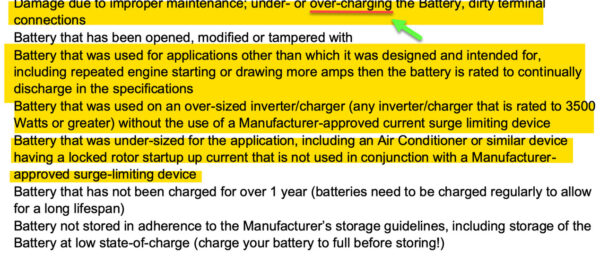 Exclusion: “Damage due to over-charging”
Exclusion: “Damage due to over-charging”
vs. the Marketing ;
“Each XXXXX brand Battery is Protected from over-heating, over charging…”If you’re wondering how a battery that has a BMS that “protects from over-charging Can be “over-charged” it is pretty simple.”OVER CHARGING CAN BE FROM “OVER ABSORBING”! Lead acid chargers are notorious for over-absorbing.
Will a Manufacturer be around to honor a 5+ year warranty?
The two brands below no longer exist…..
Have you done enough research on a manufacturer?
Could this be a reason why one of the brands from above disappeared?
WHAT ABOUT FLOAT CHARGING
Float charging is a relic that’s left over from lead acid battery charging. Lead acid batteries directly benefit from being held at 100% SoC. LFP do not benefit from this.. Float charging is not necessary for lithium iron phosphate batteries. The only reason any lithium ion phosphate battery manufacturer even suggest a float voltage is to satisfy end users who want to continue using legacy/antiquated lead-acid charging equipment . In no way does float charging benefit your LFP batteries. The act of holding LFP batteries at or near 100% SOC can only serve to slowly eat away at cycle-life. An LFP cell can achieve 100% SOC at just a bit over 3.4 VPC (13.6Vpack voltage) if you’re battery manufacture suggests anything over 13.6V for float you may want to reconsider that and set it below 13.6V .You can always set it lower but should not go higher.
When LFP used to cost $10,000.00 to buy & install maximizing cycle life was a huge concern. Today with LFP pricing lower than floodded deep-cycle batteries who cares if you loose a few cycles due to floating.
There are charger manufacturers out there who actually understand charging LFP batteries.Victron is about the best known. Victron has a specific setting in their custom menu that allows you to set a “storage” voltage this is a voltage the charger drops to after a short float has been done. It can be custom programmed to allow the batteries to self discharge down to about 50% SoC before the charger kicks back in and maintains the “storage voltage.”the only chargers or inverter/chargers we currently recommend for lithium iron phosphate batteries are Victron.
Don’t take my word for it, here is Battleborn….
What About Storage?
As mentioned above lithium ion phosphate batteries do not prefer to be sitting at or near 100% state of charge for long periods of time. This is why you will see, from nearly every single legitimate drop-in battery manufacturer, a recommendation for storing the batteries at or near 50% state of charge or less
Below are snapshots from lithium ion phosphate drop-in battery manuals or specification sheets .
What about “Hybrid ” Systems?
A hybrid system is where an owner decides to parallel Lead-Acid and LFP.Sure, you can find someone on YouTube to tell you what you want to hear, but this is not always what you should hear… Ask yourself what happens when the lead acid battery internally shorts if it is connected in parallel to LFP?
Euroropean ISO standards
Even Direct from China Manufacturers disallow it.
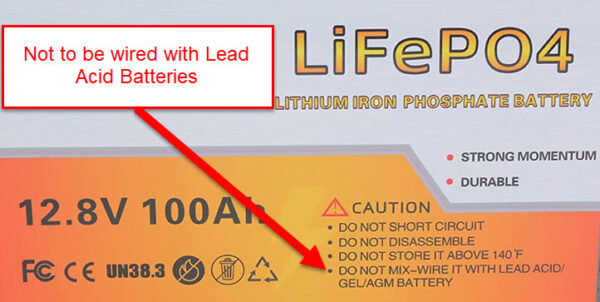
From LFP Manuals/spec Sheets
Over-Current Protection?
Battery Banks & Over-Current Protection Article
The article above goes into great detail on this subject.Lithium iron phosphate batteries can throw a ton of current into a short but the fuse protecting the wire must have a suitable AIC rating. AIC stands for amperage interrupt current. AIC is different than the fuses trip rating. AIC is the maximum safe-current the fuse or breaker can trip under without having an unsafe-failure. For example if a battery has too much amperage, in a dead short ,Circuit breakers can actually weld-shut before they can trip. This is why AIC matters. The bottom line is that class T fuses are what should typically be used when protecting lithium iron phosphate batteries.Here at CMI we shorted a single 2oAh LFP cell and it easily exceeded 1000A! Now imagine a 400+Ah bank.
ABYC E-13
The UL image below depicts a drop-in battery with a FET BMS that is “short circuit protected“. As can be seen this single drop-in battery can stilldeliver over 5500A into a dead short! Now imagine if you have two or three of these batteries in parallel or four+. The short circuit current of a FET BMS is always considerably higher than one would assume it is When in doubt use Class T fuses for LFP.
A BMS is not considered Over-current Protection Under Any Safety standards
The reason I’m showing an image of the mega or AMG fuse below is because of the growing popularity of the Victron Lynx distribution systems. These are excellent systems, we love them,however, caution must be used when connecting them directly to a battery bank. In North America over-current protection needs to follow the ABYC’s AIC guidance. Mega/AMG fuses are fine so long as they are downstream of A fuse or breaker that is properly AIC rated to handle the batteries short-circuit current. In other words, MEGA/AMG fuses should not be used to directly connect to a lithium iron phosphate as the primary over-current protection as the can only interrupt up to 2000A safely..
Below are the specifications for a blue Sea systems Cass T fuse. Notice the fully encased metal body and the 20,000 A interrupt capacity. Also note that these fuses are rated at 20,000A at 125 V. Tthe higher the voltage the tougher it is to meet in AIC rating. Compare this to a typical ANL fuse which only has a 6000 amp AIC rating at 32V. a class T fuse would have a significantly higher AIC rating@12 V if it was tested at this point because it meets 20,000 AIC it 125 V there was no sense in spending the money to tested at a lower voltage.
I would be sloppy if I failed to mention that any installed fuse should not be sized to carry more than 80% of its rating. This also goes for circuit breakers. This is especially true when installing inverters & charge equipment and especially alternators. For alternators a fuse of at least 140% of the alternators rating should be used. Thankfully , Blue Sea Systems is finally addressing this and putting it in their literature.
In summary, do your homework, purchase carefully, avoid direct from China imports when you can,install your system safely, use good quality charge equipment and you will be happy for many, many years and thousands of cycles.
Good luck and happy boating!

